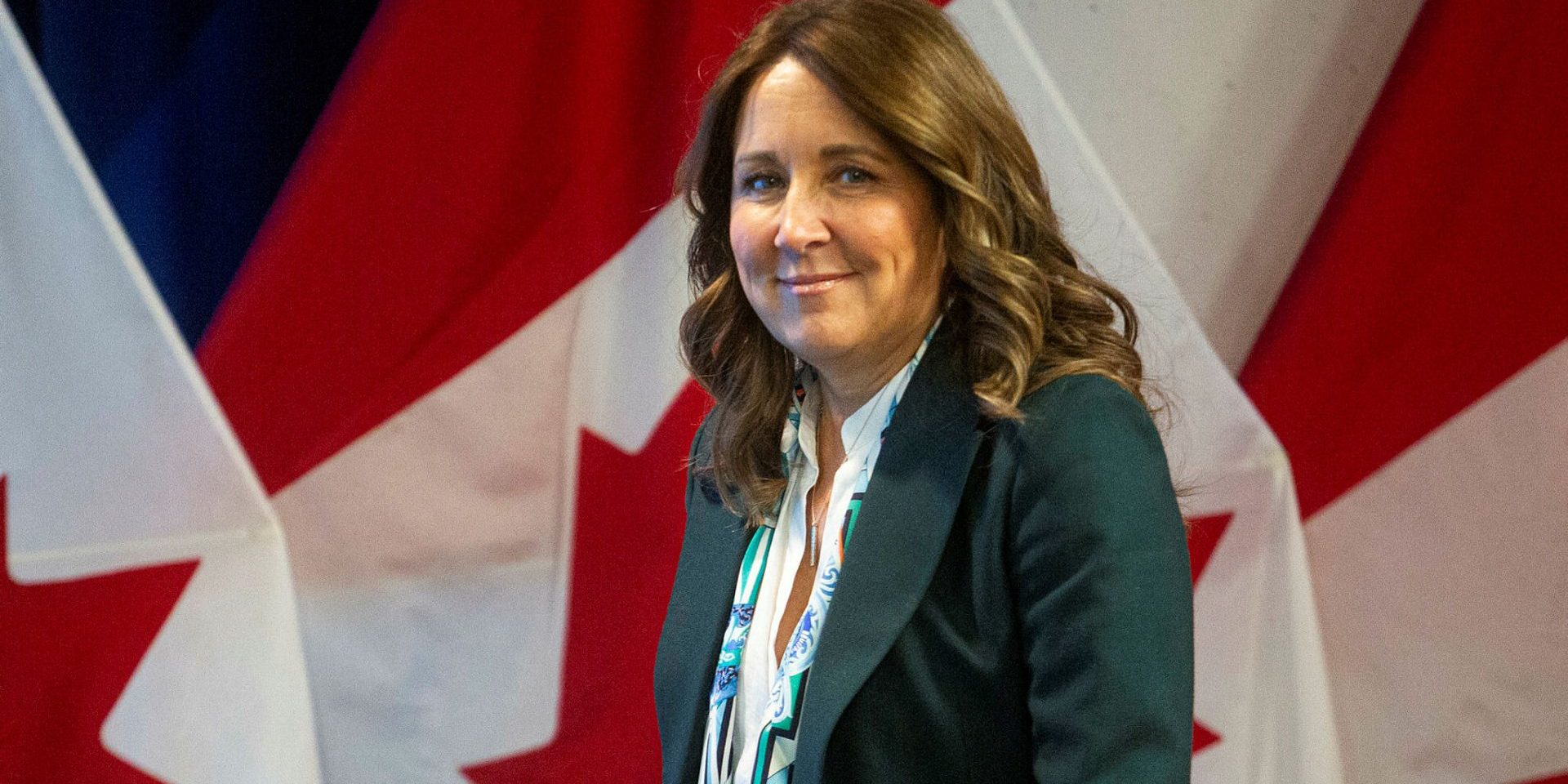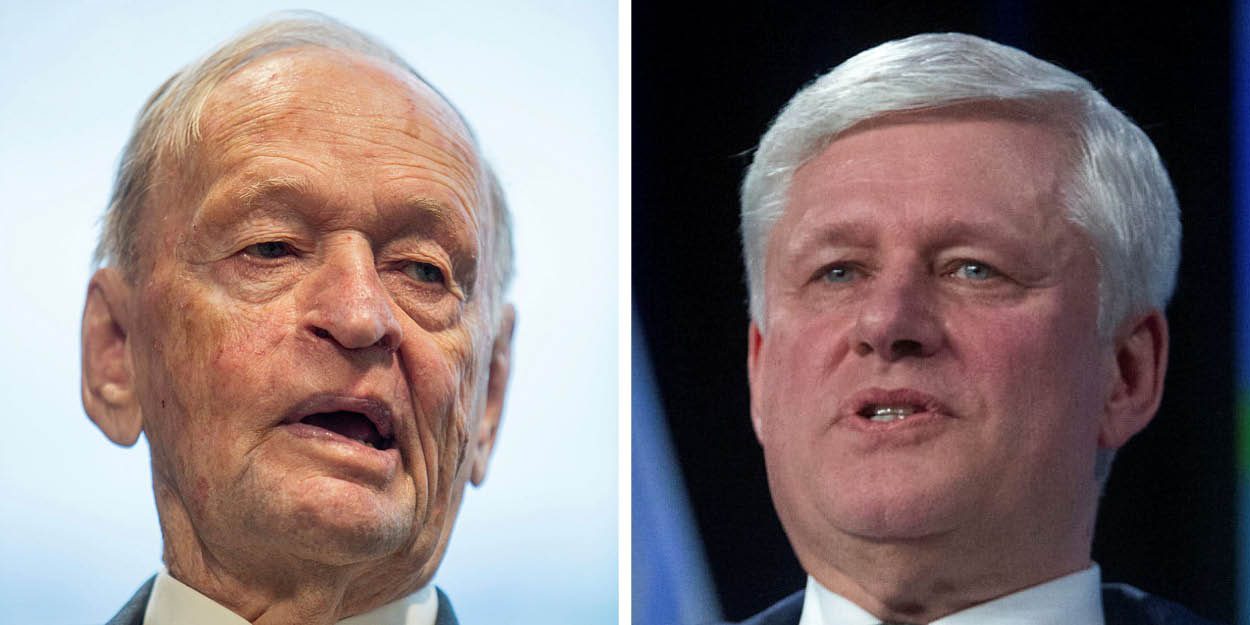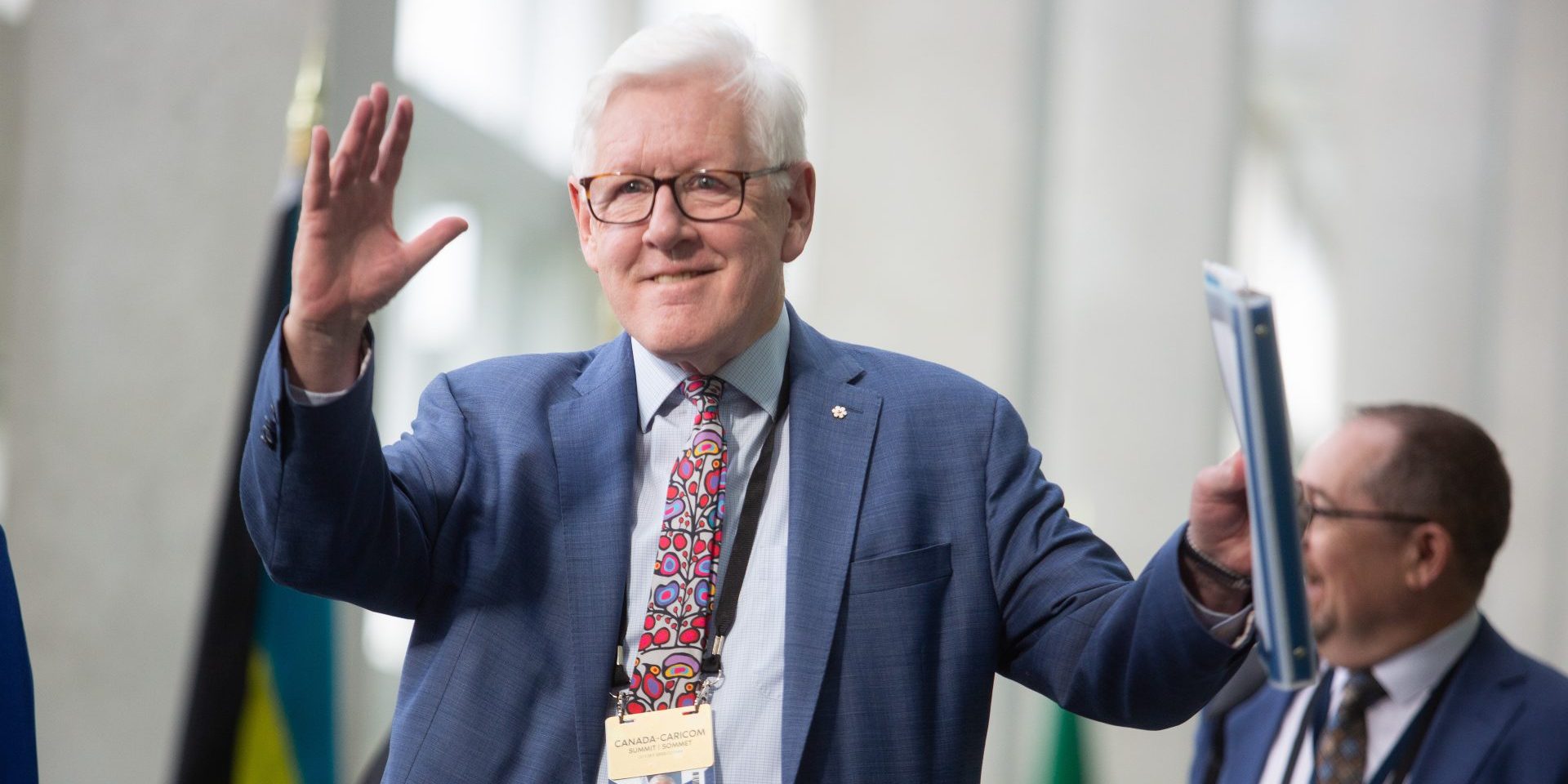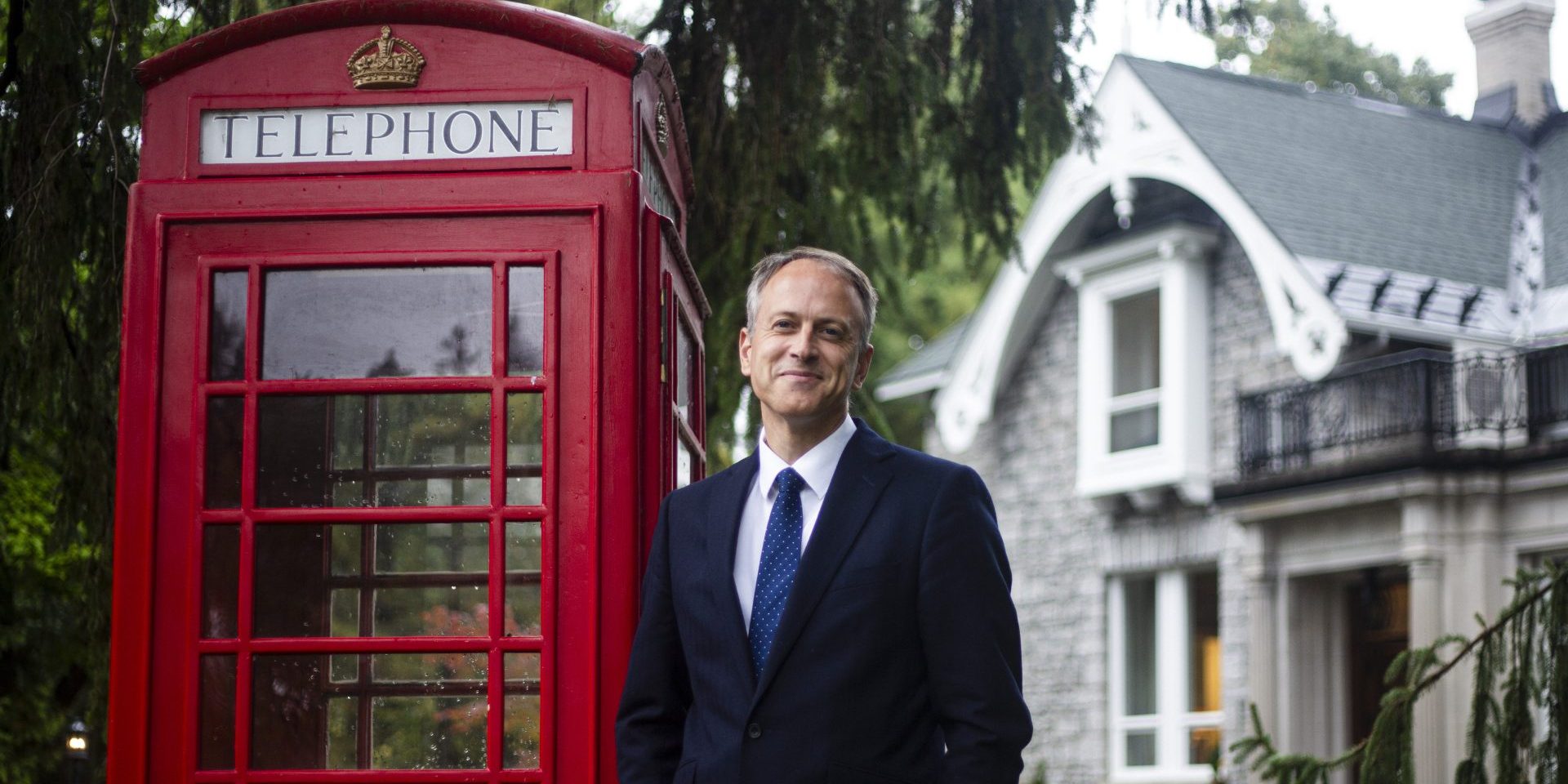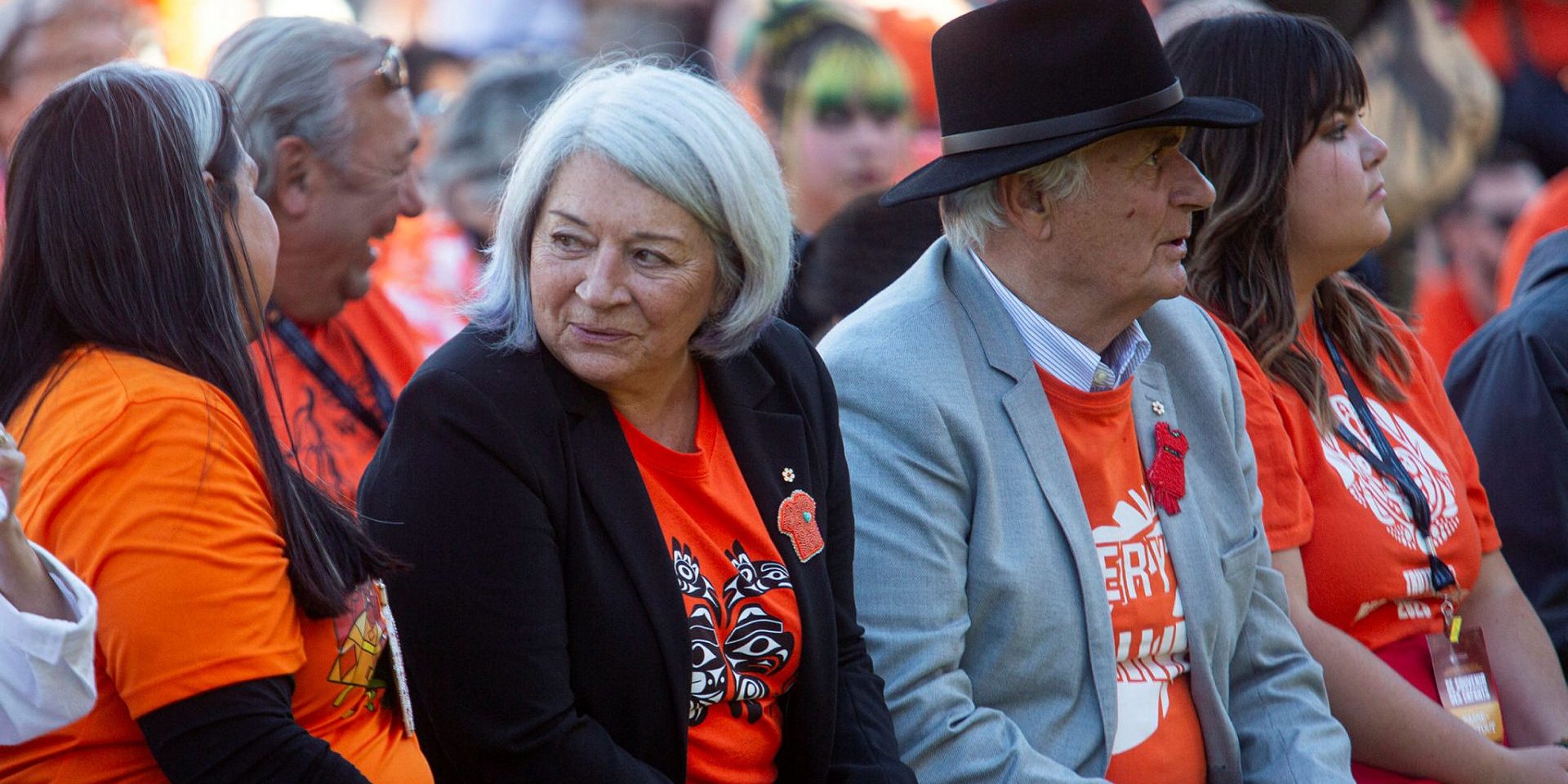Election promise tracker: key pledges parties are making this campaign
From home-building incentives to beer tax cuts to building an east-west energy grid, every day brings a new policy that parties hope will give them an edge this election.
Every weekday, the Politics This Morning team is diving into a selection of the main promises coming from the mouths of Liberal Prime Minister Mark Carney, Conservative Leader Pierre Poilievre, NDP Leader Jagmeet Singh, Bloc Québécois Leader Yves-François Blanchet, and Green co-Leaders Elizabeth May and Jonathan Pedneault.
Read more below for that breakdown by date, or sign up for the newsletter here to get it in your inbox each day.
April 24
liberals unveil b.c.-focused pledges
While in Port Moody, B.C., Carney’s Liberals issued a B.C.-focused press release highlighting a collection of specific (and decidedly unspecific) policy promises, including:
- Scrapping the GST on homes under $1-million.
- Spending $25-billion to subsidize the building of pre-fabricated homes.
- Generic language about “conserving natural habitats”.
- Tax credits for investment in “clean energy”.
- A promise to “build major nation-building projects.”
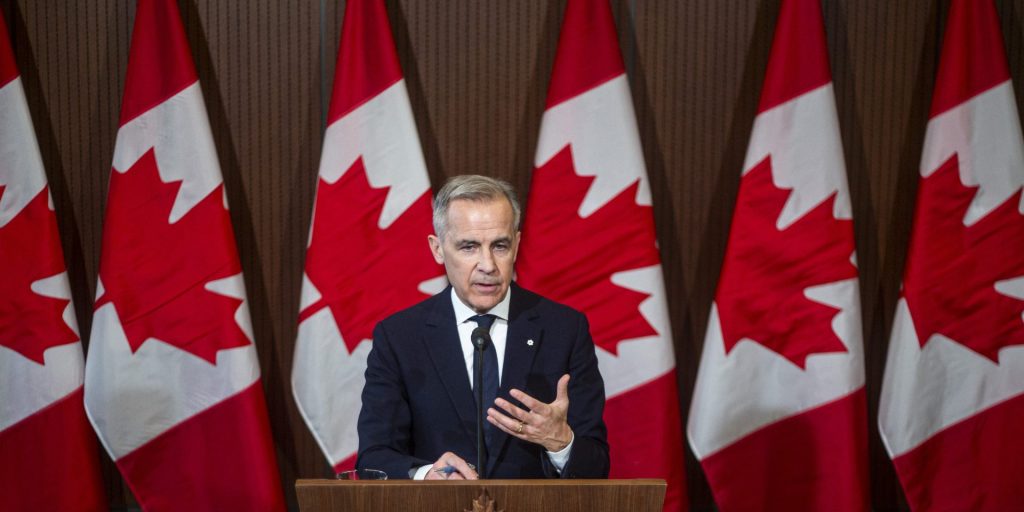
- Mandates for the use of Canadian raw materials in projects receiving federal infrastructure funding.
- Subsidies for apprenticeship training.
- “Trade-enabling infrastructure”.
- And a promise to “work with” Indigenous peoples and advance their priorities.
Tories scrap zero-emission vehicle sales
The Conservative Party opted to highlight its promise to scrap the zero-emission vehicle sales mandate in a new press release. The party framed its decision as akin to cancelling a “$20,000 tax on gas-powered cars starting next year.” There is no such tax on the way, strictly speaking, but the ZEV policy in question would provide auto manufacturers with a “credit” to sell a gas car for every $20,000 they spend on electric vehicle charging infrastructure.
NDP eyes future trade talks
The NDP focused on international trade in a press release that promised to keep certain things off the table in any future free trade negotiations—actually, to protect them from “being exploited” in those deals—including critical minerals, fresh water, public infrastructure, health care, manufacturing, “pharmaceutical supply chains,” environmental rules, labour protections, Charter rights, and treaty rights.
This was a mild elaboration on the short section of the NDP platform entitled, “protecting what makes us Canadian.” That section didn’t mention fresh water or pharmaceuticals, for example.
April 23
Conservative PLATFORM gets passing grade
The 27-page Conservative platform isn’t as lengthy as others, but it still includes more pledges and promises than we can comprehensively unpack here.
Big picture: here is our first pass, which summarized the platform promises that had been run past the Office of the Parliamentary Budget Officer.
Here is the analysis by the University of Ottawa’s Institute of Fiscal Studies and Democracy. It rated the Conservative Platform as a “pass,” with a higher rating for transparency. It noted that the Conservatives plan to cut net spending by $23-billion over four years, cut taxes by $75-billion over the same period, and are banking on their economic policies to bring in an extra $60-billion over four years to the government’s bottom line. It gave the Tories poor marks for failing to account for the risk of an economic downturn in its calculations.
Here is a collection of some of the proposed policies, excepting those in our rundown from yesterday:
- Creating a pre-approved “national energy corridor” to fast-track approvals for pipelines and other infrastructure within Canada.
- Creating a “Rapid Resource Project Office” to fast-track regulatory approvals and environmental reviews for all levels of government for major projects.
- Creating “shovel ready zones,” which are pre-permitted so project proponents can skip past even that abbreviated process.
These proposals are accompanied by commitments to cancel a range of government policies designed to limit the emission of greenhouse gases. The industrial carbon tax, clean electricity regulations, the Low Carbon Economy Fund, the electric vehicle mandate… if it’s a greenhouse gas policy and you can name it, it’s probably going out the window. The only real reference to a GHG policy is to a part of the Paris Agreement that references international co-operation over emissions reduction… which the Conservatives want to leverage in order to ship oodles of liquefied natural gas around the world.
The theme here, is that the Conservatives want to build, build, build, and pump fossil fuels as fast as they can. They’re counting on it to bolster the economy quickly, which they need to happen in order to pay for their tax cuts.
What could go wrong?
Well, to start with, a recession triggered by a trade war and stock market uncertainty. Or, opposition by provincial governments and/or First Nations to the elimination of environmental assessments in general, or pipeline projects specifically. Or, gun-shy investors, who don’t believe the market is ready to support the projects the Conservatives wish to see built.
Food for thought. Moving on to more promises.
- “Fix the CAF’s recruiting crisis by increasing our Reserve Force to 30,000 and our Regular Force to 71,500 within 18 months.”
The CAF has just recently announced its plan to hit those targets by… 2032. We’ll file this one under “how?” and keep going.
- “…put an end to the imposition of the Woke ideology in the federal public service and in the allocation of federal funds for university research.”
Quick, hide your research on transgenic mice!
- “Fast-track home building through ‘shovel ready zones’ so new homes can be built faster.”
- Introduce a “free trade bonus” that rewards provinces that lower trade barriers.
- “Tie infrastructure funding to results, not promises.
- “Hold back federal dollars from cities that raise building fees or block needed development.”
Kudos to the Tories for aiming to boost internal trade and housing construction. Other levels of government don’t like being bullied by Ottawa, however, and the premiers know how to cause a stink when things don’t go their way—see Alberta, Quebec, Saskatchewan, to name just a few contemporary examples.
Where will these “shovel-ready” zones for new housing construction be located? Will any locals kick up a fuss? Ontario Premier DOUG FORD tried to turn a chunk of the Greenbelt into a shovel-ready zone, and it didn’t end well.
- “Streamline the federal public service through natural attrition and retirement with only two in three departing employees being replaced.”
- “Eliminate university degree requirements for most federal public service roles to hire for skill, not credentials.”
- “Returning CMHC operating expenses back to 2015 Levels.”
- “Cut spending on consultants to save $10.5-billion.” (This likely refers to all spending on external professional services, not just consultants.)
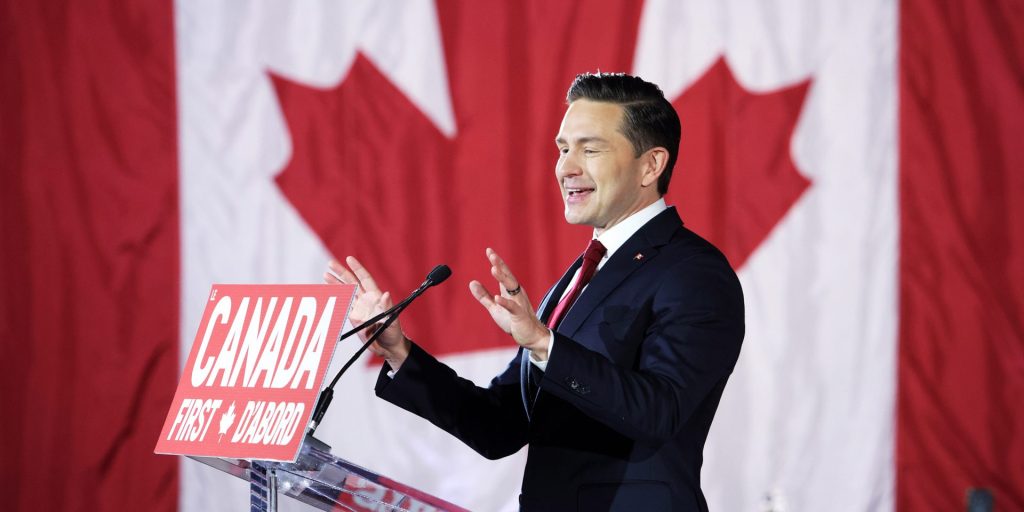
The Conservatives also asked the PBO about cutting the budgets of the Public Works and Shared Services departments by 10 per cent, though there is no mention of either in the platform.
Is the federal public service good for anything? Do public servants do anything that a Conservative prime minister might value? There’s one way to find out, and that’s cutting budgets, cutting staff, and hiring high-school grads to run, say, the economic, financial, and legal analysis units. Poilievre might not like the answers to those questions.
Despite all of those seemingly-ignored perils and unanswered questions, we’re going to end this segment on a cheery note, highlighting three Conservative proposals that are probably worth getting behind:
- Funding 1,000 autism support worker training spots annually to better support students, families, and schools.
- Doubling the reach of the Ready, Willing and Able program, helping 4,000 Canadians with autism or intellectual disabilities find and keep jobs.
- Closing Canada Elections Act “loopholes” to “stop third parties from hiding funding sources that can allow for foreign financing of third parties engaging in regulated electoral activities.”
Forcing third-party advertisers to disclose the sources of their funding? Now that’s a great idea—and not just for stopping foreign interference.
Liberal Pltaform scores ‘good’ ratings
The IFSD scored Mark Carney’s costing plan the highest in its review, giving it 35 out of 44 points overall. It received “good” ratings under three main criteria from IFSD: having a basis in “realistic and credible” fiscal assumptions, transparency, and “responsible” money management.
To recap, the platform added $129-billion in new spending for measures under four priorities: unite, secure, protect, and build. It is largely focused on capital investments meant to build long-term infrastructure.
The IFSD also awarded scores under several sub-headings, including accounting for global uncertainty and threats from the U.S., long-term sustainability, and providing a clear implementation plan for key policy measures.
While the Liberal leader’s fiscal proposal got three out of four in the above categories, it received a score of just two out of four in the category of providing for unforeseen events.
Interestingly, the plan was marked the highest—four out of four—on the criterion of “providing sufficient detail on the proposed measures.” The full assessment is available here.
Politics This Morning deep dived into the platform to ascertain if it really is as transparent and detailed as promised.
The major expense items, as reported earlier, are the costs of federal income tax cuts ($22-billion) and new defence spending ($18-billion).
The cancellation of a hike in the capital gains inclusion rate, which would have gone up from 50 per cent to 75 per cent for corporates and high-earning individuals, will cost $13-billion.
Carney’s proposed “Build Canada Homes” entity, which will act as a developer overseeing construction of affordable housing, will come at a price tag of $12-billion.
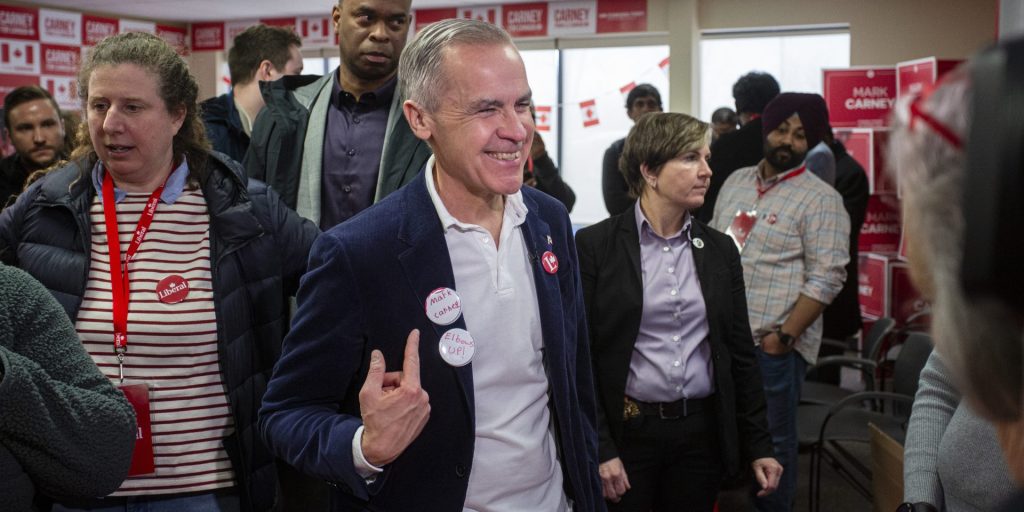
A “National-building Project Fund” of $7-billion over the next four years includes spending on projects including a Windsor to Quebec City high speed rail, and a passenger train between Edmonton and Calgary.
A “Trade Diversification Corridors Fund” worth $5-billion has a more vague description of covering “ports, railways, airports, highways, and other trade-enabling infrastructure.”
If we know one thing about big infrastructure projects in Canada it is that they take years to build—way beyond four—and exceed the price tag initially set for them by manifold. Case in point, the Trans Mountain Pipeline.
Speaking of pipelines, the word is nowhere to be found in the Liberal fiscal plan—don’t tell Alberta Premier DANIELLE SMITH. But there is a provision of $1.5-billion for an east-west electricity grid, and $2.5-billion for building data centres and other “digital infrastructure.”
There is also $2-billion for infrastructure projects in the Arctic, and nearly $1-billion for security in the Arctic. The Liberals have proposed a “Canada-Europe Arctic security co-operation agreement” to this end, too.
There are several other expenses highlighted below:
Funding boost to CBC/Radio-Canada: $600-million
Building new hospitals, clinics, and long-term care facilities: $2-billion.
A “Strategic Response Fund” to “boost auto-sector competitiveness” and “[protect] manufacturing jobs,” among other things: $2-billion. (How it would do those things is not explained.)
A “Domestic Food Processing Fund” meant for setting up food processing facilities in rural and remote areas: $200-million
Increasing the Guaranteed Income Supplement (GIS) for low-income seniors by five per cent: $1.5-billion in 2025-26 and 2026-27.
Launching an IVF program: $412-million over four years.
Tax incentives to builders of multi-unit rental buildings (MURB): $4-billion over four years.
Cutting development charges for municipalities: $6-billion
Honorary mention for egregious vaguery: “Protect workers and businesses from tariff impacts”: $2.5-billion.
Spending on women’s health, and LGBTQ+ and Indigenous communities were among other stand-out items.
Not included: A provision for any more of the pricey legal settlements with Indigenous communities that have weighed heavily on the government’s bottom line in recent years.
April 22
Conservatives release their platform
The Conservative Party released its full election platform on April 22, finally rounding out the offerings from the major federal parties. The platform came in for some criticism after its release, not least for its rosy economic projections.
The quick version is that the Conservatives expect their planned moves to boost housing construction and disable barriers to resource sector expansion to yield plenty of fruit … and they will be spending all of that fruit and more on tax cuts.
That still won’t be enough to pay for the platform, so the Conservatives are planning to (a) run deficits for at least another four years, and (b) cut government spending and capability to save some more.
Here’s a look at some of the proposals that have been costed by the Office of the Parliamentary Budget Officer.
Cost/spending
A phased-in reduction of the federal tax rate on the lowest taxable income bracket to 12.75 per cent: cost of $1-billion next year, rising to $14-billion in 2029-30.
Increasing the GST New Housing Rebate to 100 per cent of the GST/federal portion of HST for new homes valued at or below $1.3-million: cost of about $2-billion per year.
Increasing the Basic Personal Amount by up to $10,000 for seniors earning employment income: cost of $5.8-billion total over five years.
Cancelling the increase in the capital gains inclusion rate: cost of more than $4-billion per year by years four and five, $17-billion total over five years.
Increasing the age at which RRSPs must be converted to RRIFs from 71 to 73: cost of $4.9-billion total over five years.
Removing the alcohol “escalator” tax: cost rising to $483-million by year five, $1.9-billion in total over five years.
Cuts/savings
A phased-in reduction of spending on professional and special services: savings of $1.3-billion next year, rising to almost $14-billion by 2029-30.
Cutting the size of the public service through “natural turnover,” replacing only two of three departing employees: savings growing to $4.3-billion by year five, $8.7-billion total over five years.
Ending the Housing Accelerator Fund: savings of $1.3-billion next year, another billion the following year, and then $107-million in year three, then nothing after that.
Reducing operating spending by Public Works and Shared Services by 10 per cent: savings of about a half-billion per year.
Cutting CMHC operating expenses to the 2015 level: about $150-million per year in savings.
The platform also included a promise to pass a law that would trigger a national referendum any time the government wanted to raise taxes.
April 21
Carney pitches health-care reform
The federal leaders have each announced a slew of new proposals in recent days.
Carney laid out his plan to fix health care in Canada by building more medical schools and hiring qualified doctors under a new global recruitment strategy, among other things.
His government, he claimed, will put in $4-billion to “construct and renovate community health care infrastructure”, launch a task force for Public Health Care Innovation and make the Sexual and Reproductive Health Fund Program permanent.
The focus on increasing the number of doctors and medical staff is a repeat of a similar promise made by former prime minister Justin Trudeau in 2021. Trudeau set aside $3-billion over four years to help hire 7,500 family doctors, nurses, and nurse practitioners in his campaign.
There are also ongoing programs, both federally and provincially, to expand the number of medical staff. In March itself, former employment minister and now Jobs Minister Steven MacKinnon, announced $14.3-million in funding to help internationally-trained health care professionals to work in Canada.
Unlike his predessor, Carney’s platform did not suggest a hike in health-related transfers to provinces and territories, but he has pledged there will be no cuts made to them. Singh claimed his party will push to protect pharmacare and dental care programs— which the Liberals’ platform also said they will do.
Singh also committed to stopping any privatization of healthcare, by introducing a law and banning U.S. corporations from buying Canadian healthcare services. Poilievre, meanwhile committed to protecting dental care and child care programs if elected as prime minister.
Poilievre pledges to build millions of new homes
Poilievre revealed an ambitious housing plan on April 21, claiming that his government would build 2.3-million homes in five years.
This, he said, will be achieved by rewarding cities that allow at least 15 per cent more homebuilding with extra federal funding, and penalizing those that miss their targets by reducing their infrastructure funding proportionally. He listed other measures like requiring cities to pre-permit housing in order to get their federal funding for related roads, bridges and transit, and encouraging municipalities to cut building taxes.
While Poilievre appears to be focused on removing bureaucratic hurdles in the way of building more homes, there is one important aspect to consider here: the demand for homes, especially for condos. According to Canada Mortgage and Housing Corporation, housing starts will likely slow down from 2025 to 2027, as fewer condo apartments are expected to be built due to developers finding them harder to sell.
First-time home buyers, CMHC said in its 2025 outlook, may prefer resale homes instead of new homes. Additionally, as per the Canadian Home Builders’ Association, U.S. tariffs and Canada’s counter tariffs in the trade war will have a detrimental effect on housing starts in Canada.
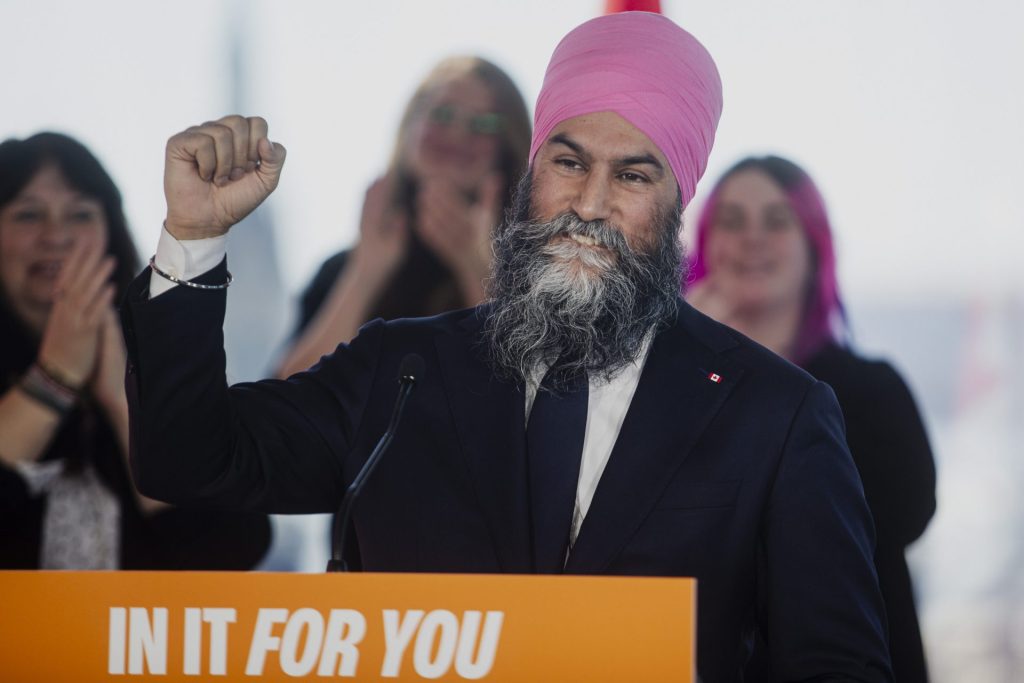
Singh pushes for windfall taxes on grocery chains
Singh’s fight against price gouging by grocery bigwigs. On April 21, Singh unveiled his party’s plans to cap grocery prices for certain essential items like baby formula— a pledge he also made during the debate. He went further to claim that an NDP government would introduce a “windfall tax” on grocery profits and make it mandatory for retailers to follow the Grocery Code of Conduct.
The code is expected to come into force in June, but adherence to it is currently voluntary. Loblaws, Metro, Walmart, Sobeys and Costco have signed or agreed to sign the code so far. CBC News has an explainer on it here.
April 15
Carney on boosting skilled trades
Carney pitched more measures to boost Canada’s skilled trades workforce during a campaign stop yesterday at the Nova Bus plant in the Montreal suburb of Saint-Eustache.
He promised “a new, sector-specific, mid-career training and upskilling benefit” of up to $15,000 per worker in “priority sectors” including manufacturing, construction, health care, artificial intelligence, and technology to access new skills training, according to a press release issued by the party.
The cash wouldn’t necessarily go to the worker, however; the Liberal pitch said that the government would “collaborate with employers to support retention and upskilling within their companies”.
The Liberals additionally promised to “ensure that Canadian workers impacted by tariffs have the necessary tools to pursue good paying jobs and advance their careers in priority sectors.” No details were provided, beyond a commitment to “design these supports in partnership with labour, employers, and industry.”
The Liberals have already announced a number of offerings to that end, including covering the cost of apprenticeship training up to $8,000 for skilled trades workers, doubling funding for union-led training programs, setting aside $20-million for colleges to increase training spaces for apprenticeships, and extending the Labour Mobility Tax deduction.
Conservatives offer seven-point plan to stop fraud
Poilievre unveiled a seven-point plan for stopping fraud against senior citizens yesterday.
New rules for the banking and telecomm industries were at the heart of the plan. Senator Tony Loffreda, a former longtime executive with Royal Bank of Canada, weighed in on the proposed changes. Poilievre’s proposals are posted below in italics, along with a summary of what Loffreda had to say about them during a call with PTM on April 15.
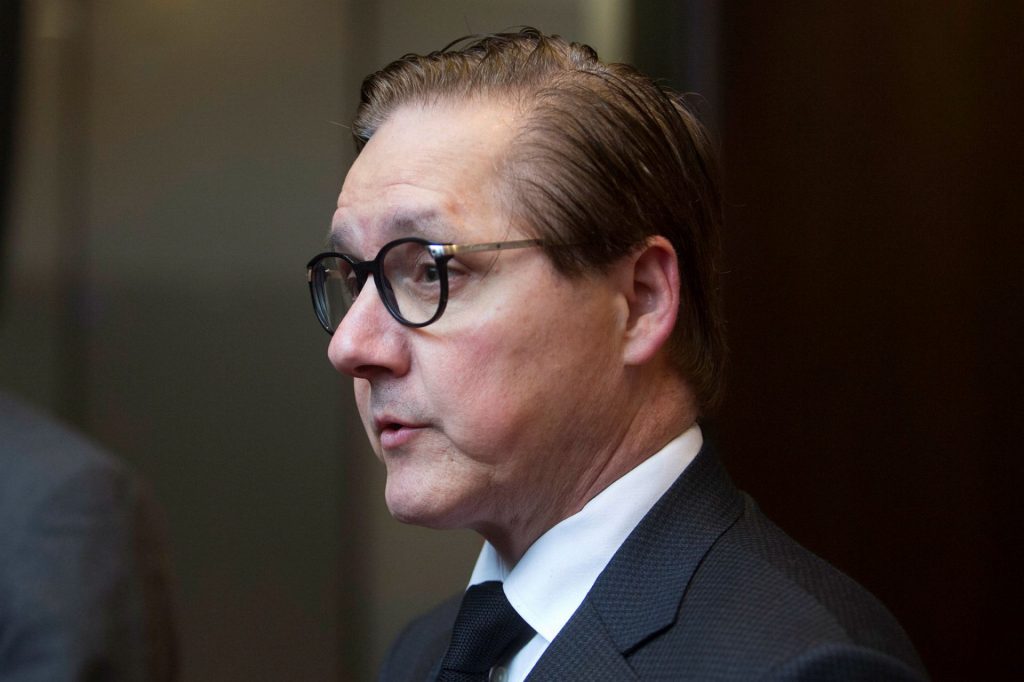
1—Require mandatory scam detection systems for banks and cell phone companies, especially for high-risk accounts such as seniors over 65.
Banks and telecos “already use sophisticated fraud detection systems,” said Loffreda, though how they do so varies between institutions.
Mandating a minimum standard for the industry should be feasible, but the government would have to craft any regulations carefully to avoid creating consumer privacy problems, he said.
2—Require real-time flagging and blocking of suspicious activity, including unusual or suspicious money transfers, repeated phishing text patterns, and robocall patterns—backed by heavy penalties for non-compliance.
Once again, Loffreda said that banks already do this to a certain extent, calling it a “core function in modern banking.”
Doing so more aggressively would be tricky. It would require “significant collaboration” with telecom providers, said Loffreda. A more stringent definition of “suspicious activity” would lead to more legitimate transactions being flagged and blocked, leading to customer frustration.
Compliance penalties can work, but should be tiered to reflect the level of a bank’s culpability in a given circumstance, he said.
3—Create a Senior Transaction Shielding Protocol (STSP): a mandatory 24-hour transaction delay for high-risk transactions on seniors’ accounts–or on the accounts of anyone else who requests such protection–during which time a verification call and fraud check must occur.
Loffreda spoke favourably of this proposal, saying that it “could be a lifesaver in some circumstances.”
The “mandatory” bit is where things get complicated, however. Not every senior citizen would want to be singled out for different treatment, and those who aren’t aware of the protocol could see legitimate transactions delayed to their detriment—for example, missing rent payments, said Loffreda.
Making a voluntary system that seniors could opt in to would work better, said Loffreda.
4—Mandate public reporting by banks and telcos on fraud prevention statistics, volume of scam data blocked, and customer reimbursements made.
More transparency about fraud prevention would be a good thing, helping Canadians to choose which bank is the safest or most trustworthy, said Loffreda.
Implementing this pledge would require standardized reporting requirements, definitions—for example, what does and does not qualify as a prevented fraud—and privacy protocols to ensure that customer data is anonymized before being made public, he said.
5—Impose a mandatory minimum one-year jail sentence for fraud over $5,000, three years for fraud over $100,000, five years for fraud over $1 million and minimum fines of 10 times the amount defrauded.
(We skipped the analysis for this one, as it does not relate to the banking sector.)
6—Impose penalties of up to $5-million per violation for willful neglect for failure to implement adequate scam prevention tools.
“There is value in that,” said Loffreda. Holding institutions accountable is important, “but willful neglect must be defined carefully,” he said.
“Even good-faith actors could miss a sophisticated fraud attempt.”
An overly-broad definition of willful neglect would lead to “excessive internal red tape” within banks, as they would seek to manage the new risk, he said.
7—Create a new Criminal Code offence of “willful blind profiteering from fraud,” targeting executives who ignore red flags and knowingly allow scam traffic or activity to continue.
“Targeting executives who knowingly allow scam traffic or fraudulent activity to persist, particularly in telecoms, will close the loopholes,” said Loffreda.
However, “knowingly” must be well defined, he said, and the penalty should not apply to executives who lacked “material knowledge” of the failure.
We also reached out to the Canadian Bankers Association, which lobbies on behalf of Canada’s banks, to get its take on the Conservative proposals. Its response did not directly address any of those proposals, but said that public-private co-operation “can address the ever-evolving and accelerating threats of scam and fraud and reduce its occurrence.” The CBA noted that a collection of organizations in banking, law enforcement, telecommunications and digital platforms were working together in what it called an “anti-scam alliance.”
April 14
Poilievre pledges to bypass the Charter of Rights
Poilievre announced plans to trigger the notwithstanding clause in Canada’s Constitution in order to revive criminal penalties that violate the Charter of Rights and Freedoms. Specifically, Poilievre’s team said that a Conservative government would use Sec. 33 of the Charter of Rights and Freedoms—commonly referred to as the “notwithstanding clause”—to override Sec. 12 of the Charter, which guarantees that: “everyone has the right not to be subjected to any cruel and unusual treatment or punishment.”
The Conservatives would do so in order to revive a clause of the Criminal Code struck down by Quebec’s Court of Appeal—a decision later affirmed by the Supreme Court of Canada—that allowed judges to impose consecutive life sentences for murder.
“For the worst mass murderers, a life sentence should mean what it says: a sentence for life,” the Conservative Party announcement said, attributing the remark to Poilievre. “These monsters should face the full consequences of their actions. Every life matters, and a killer who takes multiple lives should be held to account for each one. There should be no discounts for multiple murders.”
In its 2022 decision upholding the Quebec Court of Appeal’s ruling, the Supreme Court decided that “such sentences are degrading in nature and thus incompatible with human dignity, because they deny offenders any possibility of reintegration into society….” The case in question was the conviction of Alexandre Bissonnette, who was convicted of murdering six people in a Quebec City mosque in 2017.
This policy raises two questions for voters:
- Do you think someone convicted of multiple murders should ever have a chance at getting out of prison?
- Do you trust that the federal government—led by Poilievre, or whoever follows him—would only override civil liberties this one time, for murderers, and not any other time it finds doing so convenient?
To (badly) paraphrase a certain late rock star, overriding civil liberties is a helluva drug.
Just ask the provinces, which have begun using the notwithstanding clause regularly to pass through laws including Quebec’s Bill 21, which prevents anyone wearing a turban or hijab from teaching at a school or providing any other public service.
No Canadian prime minister has thus far used the notwithstanding clause to thwart the rest of the Charter of Rights and Freedoms.
Poilievre outlines ethics plan
The Conservatives also outlined a package of proposed ethics reforms yesterday. They included:
- Expanding the criteria governing who must register as a lobbyist, to cover “anyone advising the government directly or indirectly, who stands to gain financially from their advice.” There are some good arguments to be made in favour of a more thorough lobbying regime. That word “indirectly” could turn out to be awfully broad in practice, however.
- Banning politicians from “making decisions that benefit themselves or their families disproportionately” and requiring that they fully disclose to the public “all personal interests.” The Conflict of Interest Act currently bars politicians from making a decision that “provides an opportunity to further his or her private interests,” or those of family of friends. We’ll let the lawyers hash out the difference between “disproportionate” benefits and furthering “private interests.”
- Increase fines for ethics violations to $10,000. The limit for those fines is currently $500.
- Requiring cabinet ministers to “divest fully from tax havens” and disclose their assets to the federal conflict of interest commissioner. Ministers and MPs are currently required to file a disclosure statement with the commissioner that lists their assets.
- Requiring party leaders to disclose their assets within 30 days of becoming leader, and prime ministers to divest their assets within 30 days of assuming office. The Conflict of Interest Act requires that any “public office holder” declare their assets to the ethics commissioner within 60 days of taking office, and make them public within 120 days of taking office.
Conservatives pitch veterans plan
The Tories weren’t finished there. They also released their policy platform for veterans. It included pledges to do the following:
- Automatically approve applications for veteran disability benefits if they are not processed within 16 weeks.
- Give veterans “full control” over their medical records.
- Allow military doctors to assess injuries using “one standardized system.”
- Make available dogs trained to provide support for post-traumatic stress syndrome “to veterans who need them,” with a consistent national standard for support.
- Make available the Education and Training Benefit to veterans immediately upon their release from the military.
Carney promises to overhaul defence procurement
Carney’s Liberal Party unveiled an update to its defence platform. Chief among the Liberal proposals was a pledge to overhaul Canadian defence procurement, establish a new “Defence Procurement Agency,” and change the existing rules and regs governing defence procurement in order to “centralize expertise from across government and streamline the way we buy equipment for the military.”
Canada’s military procurement system is famously sclerotic, confounding efforts to buy new gear for the Canadian Armed Forces even when there is money and political will behind the purchase. Procurement reform is probably a prerequisite to meeting Canada’s more ambitious defence spending targets of late. However….
Team Carney also promised to “[Buy] Canadian whenever possible, and [prioritize] Canadian raw materials such as steel, aluminum, and critical minerals.”
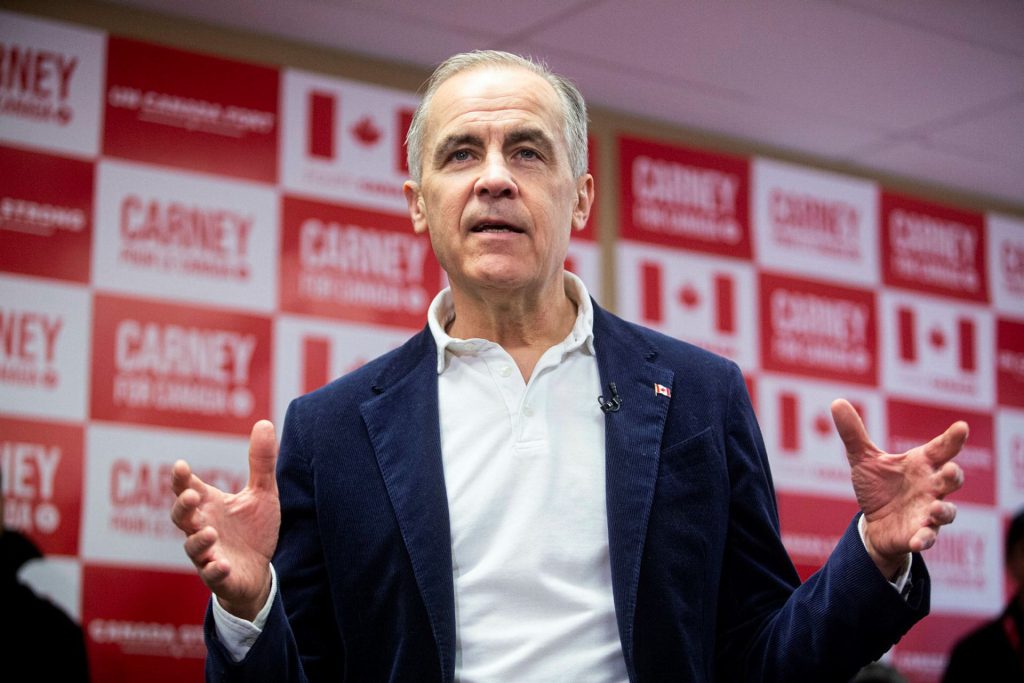
That sounds good if you are a Canadian in the business of producing weapons or mining the raw materials needed to make them. One could argue that there is a national interest in producing our own weapons, as insurance in case, say for example, a major allied arms-producing nation on which we rely becomes hostile to our interests.
The downside, however, of a “buy Canadian” approach to procuring arms is that it complicates the procurement process, adding additional boxes that must be checked, and criteria that must be considered when a purchase it to be made. Bureaucrats must be hired to do the box ticking, lobbyists for domestic producers start beating down the doors, and political aides just might come sniffing around to find out which shipyard or factory in which riding is getting the contract. We know this because it has been a defining feature of Canadian military procurement for many years.
The Liberals promised additional supports of various kinds for Canadian defence dealers yesterday as part of their announcement. They also promised to create a Bureau of Research, Engineering and Advanced Leadership in Science to develop technology for use by the military and Communications Security Establishment.
Canadian Future Party unveils platform
If you’re looking for policy from further down the ballot, the Canadian Future Party officially launched its election platform on April 14.
April 11-13
Liberals promise a Canada Strong Pass
The election pitches are now in their “throw it all on the wall, see what sticks” phase.
On April 12, the Liberals announced that they will make national museums and galleries free for young people below 18 years for the summer, and offer them free Via Rail rides when they travel with their parents from June to August 2025. The fares for those between 18 to 24 years will also be heavily discounted, the party claimed.
That promise came a day after Carney suspended his campaign on April 11 to meet with his Canada-U.S. cabinet council in Ottawa. Following the meeting, Carney offered a statement addressing “the initial signs of slowing in the global economy,” but took no questions from reporters. It marks the third pause along the federal campaign trail since the election was called on March 23, prompting criticism from opposition leaders, including accusations the prime minister is “hiding.”
The “Canada Strong Pass” sounds a lot like the “Culture Pass” that former prime minister Justin Trudeau proposed in his 2019 campaign. Back then, Trudeau drew inspiration from France, and promised to give every Canadian child a $200 pass to pay for cultural activities like going to galleries, museums or other venues, when they turned 12.
Former Conservative leader Andrew Scheer made a similar pledge in the same election, and said his government would give a free entry to Canada’s national museums to all Canadians and visitors.
Conservatives bet for increased accountability
While Carney’s campaign recycled an old pitch, his opponent, too, rejigged a promise made by his predecessors.
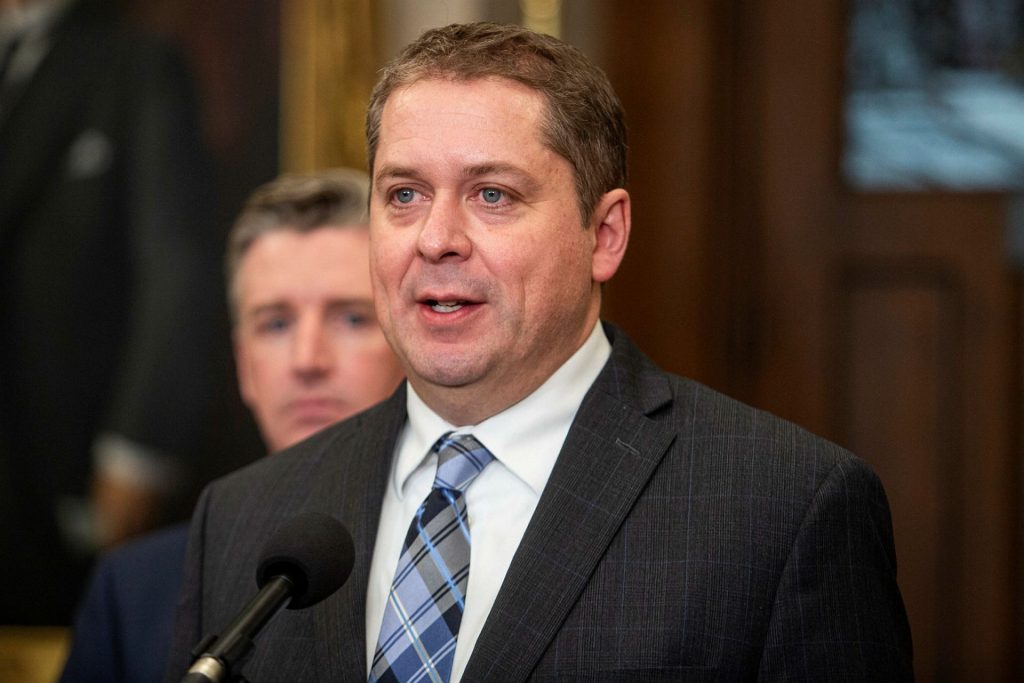
On April 13, Poilievre said in a post on X that he will introduce an “Accountability Act 2.0” under which fines for ethics violations will be brought up to $10,000, politicians will be asked to declare where they filed their taxes in the last seven years, and party leaders wll be mandated to disclose their assets within 30 days.
Under the current rules, there are no penalties for MPs when they are found in violation of the conflict of interest code, but the results of the enquiry are made public. There is an administrative penalty of under $500 for public office holders who miss their reporting deadlines or do not disclose accurate or full information under the Conflict of Interest Act.
In 2019, Scheer promised to pass a law imposing fines of up to $20,000 for politicians who violated the act.
Then in 2021, then-Conservative leader Erin O’Toole, too, vowed to pass an “Anti-Corruption Act” that would increase fines for ethical violations to a maximum of $50,000.
April 10
Liberals pledge to be tough on crime
Carney announced his party’s public safety action plan, which had a mix of more gun control, more officers on the ground, and more funding for training. At least some of the measures have been on the Liberal to-do list for a while. Others would essentially duplicate laws that already exist.
Carney promised to “continue to implement an efficient gun-buyback program for assault-style firearms.”
This will be the third consecutive election in which the Liberals have made this promise after pitching it in 2019 and 2021. During their terms as public safety ministers, Bill Blair, Marco Mendicino, and Dominic LeBlanc tried to implement the buyback, which remains a work in progress.
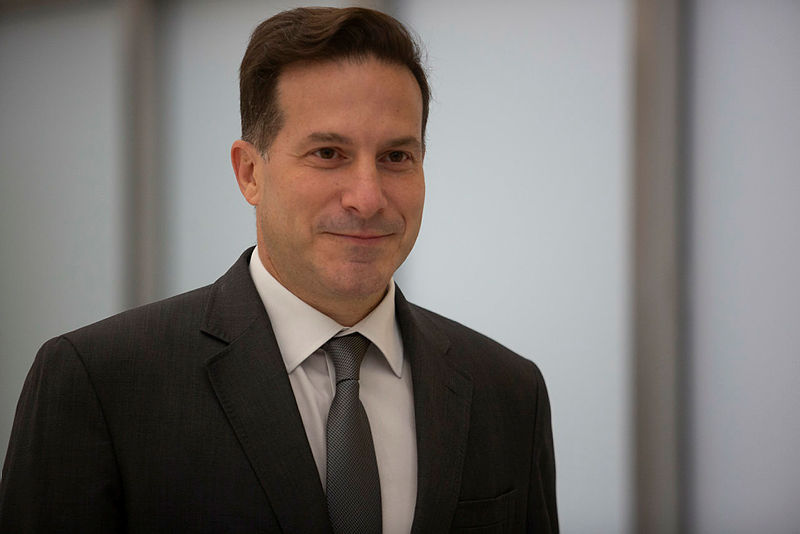
In 2021, the Parliamentary Budget Officer estimated that a buy-back scheme would cost $756-million. As per the Canadian Taxpayers’ Federation, this number was further expected to go up to $2-billion, so making it “efficient” might be a challenge.
A report by the Toronto Star this Feb claimed that the Trudeau government reached out to police forces across Canada to kick start their weapons buyback program for gun owners, but the feds were scrambling to figure out who will collect the guns.
Carney also pledged they will automatically revoke gun licenses for people convicted of violent crimes, especially convicts in intimate partner violence cases. But this is already the case, per the terms of Bill C-21, which was passed in 2023. More on it here.
The proposal also talked about “making it harder for those charged with violent car theft, car theft for a criminal organization, home invasion, and certain human trafficking and smuggling offences, particularly and especially repeat offenders, to get bail by establishing a reverse onus for these crimes.”
Again, the Liberal government passed similar changes to the law via Bill C-48 in late 2023, which created reverse onus clauses for more violent crimes. This change was criticized by some at the time, including criminologist Nicole Myers, who told The Hill Times last year that people applying for bail when facing charges for violent crime are already in a de facto reverse onus situation.
Carney pitched “amending the Canada Post Corporation Act to allow police to search for and seize fentanyl and other contraband in Canada Post mail with a general warrant.” The Supreme Court of Newfoundland and Labrador ruled in 2022, that a similar law violates the charter right to privacy, so the plan could face a constitutional challenge.
Carney promised to allow “consecutive sentencing for serious and violent offences.” Consecutive sentencing is already allowed under the law.
He proposed making non-consensual sexual deepfakes a criminal offence. The Liberals tried to do that through their controversial Online Harms Bill C-63, but the legislation didn’t advance through Parliament, in part because of Conservative filibustering over privilege motions last fall.
Carney pledged yesterday to introduce legislation to make it a criminal offence to intentionally and wilfully obstruct access to any place of worship, schools and community centres. That is already covered under existing Criminal Code sections related to mischief, specifically 430 (1)(d), 430 (4.1), and 430 (4.101).
On the same lines, the Liberals’ pitch to make it a criminal offence to intentionally and willfully intimidate or threaten those attending services at these locations is also already part of the Criminal Code provisions regarding “uttering threats.”
But this is not to say that the party did not add anything new to the list. Carney’s government will add 1,000 more RCMP and CBSA officers each, the Liberals claimed, and create a new RCMP academy in Regina, Sask. The party said a Liberal government would also increase funding for the Public Prosecution Service, and the RCMP’s forensic lab to help it better track guns.
The RCMP has been facing a shortage in both its officers and staff positions , so it is unclear if 1,000 more officers would suffice to fill the gaps. The CBSA is similarly reeling from a lack of officers, as per the union for border guards. Conservative Leader Pierre Poilievre has earlier stated that the government needs to get at least another 2,000 border agents on boar
April 9
Carney unveils energy plan
The clean energy platform released by the Liberal Party is fairly lengthy. Carney and friends are essentially promising a variety of subsidies for private sector projects to mine so-called “critical minerals.”
They also promised to create a list of “projects of national interest,” in collaboration with provinces and territories, and to fast-track those projects through the regulatory approvals process—even doing away with provincial/territorial assessments, so the proponents need only go through a single environmental impact review. Carney’s Liberals also promised to cut the amount of time provided for the environmental review process, create a “major federal project office” to push projects through that process, and “shift the project review focus [from] ‘why’ to ‘how.’
This is similar to the “one-stop shop” policy proposed by Poilievre.
It remains to be seen if all provinces and territories—not to mention First Nations communities—will be eager to ditch their own approvals processes. This policy may require amending the Impact Assessment Act.
Poilievre pitches ‘three strikes’ law
Poilievre proposed a controversial change to Canada’s criminal justice regime on April 9: a “three strikes and you’re out” law. Specifically, the Conservatives pledged to pass a law that would “make sure that three-time serious criminals get a minimum prison term of 10 years and up to a life sentence.”
“They will also be designated as Dangerous Offenders, meaning they cannot be released until they prove they are no longer a danger.”
Poilievre’s proposal is clearly modelled after the “three strikes” laws in place in California and other U.S. states.
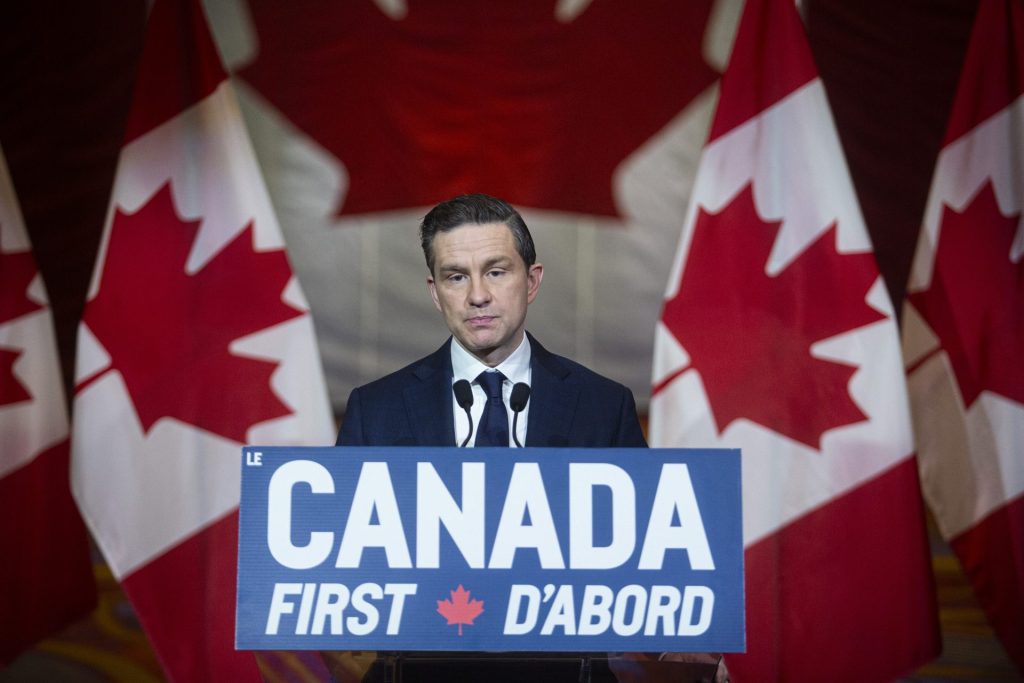
Like Poilievre’s proposal, the California law—passed in 1994—was touted as a penalty for murder, rape, and similarly serious crimes. The result, however, has been the widespread imprisonment of non-violent offenders, and disproportionately those from visible minority communities.
Stanford University’s Three Strikes Project provides legal representation to some of those offenders. According to its website, “Project clients have been given life sentences for offenses including stealing one dollar in loose change from a parked car, possessing less than a gram of narcotics, and attempting to break into a soup kitchen.”
Three Strikes laws in the U.S. may also have increased the murder rate where they apply, according to research published in 2001 in the University of Chicago’s Journal of Legal Studies.
“It is likely that the laws increase homicides because a few criminals, fearing the enhanced penalties, murder victims and witnesses to limit resistance and identification,” reads the abstract for the study, which looked at 24 states with three-strike laws.
Benjamin Perrin, a law professor at the University of British Columbia who previously served as prime minister Stephen Harper’s justice and public safety adviser, slammed the Conservative proposal yesterday on social media and in a blog post.
In an April 9 interview with The Hill Times, Perrin made the case that such a law would be very vulnerable to a constitutional challenge, on multiple grounds. Mandatory minimum penalties have been struck down repeatedly in Canada if they have led to sentences that are significantly harsher than what a given offender would receive if the mandatory minimum was not in place—essentially, if the mandatory minimum would cause an injustice to occur given the circumstances of a particular offence.
They have also been struck down for being overly broad, meaning they could lead to such injustices—the kind referenced above by Stanford’s Three Strikes Project.
The language about classifying those convicted under the law as Dangerous Offenders, potentially subject to indefinite incarceration, would additionally be vulnerable to a challenge under the section of the Charter of Rights and Freedoms that guarantees life, liberty, and security of the person, said Perrin.
Further, the law would remove any incentive for defendants to plead guilty to one of the offenses covered under the three strikes law. That means Canada’s already overburdened court system would be further bogged down, with criminal defence lawyers doing everything possible to avoid a conviction for their clients, said Perrin.
“These laws can really grind the criminal justice system to a halt,” he said.
If Poilievre’s intention is to use the notwithstanding clause to override the Charter of Rights and Freedoms, that exemption would have to be renewed every five years, and likely wouldn’t last through a change in government, said Perrin.
“The cavalier attitude toward our legal rights is disturbing to me,” he said.
April 8
Liberals put housing in focus
Highlighting the Liberal campaign’s previously announced housing plan during a stop in Delta, B.C., on April 8, Carney put a focus on leveraging Canada’s forestry industry as part of his multi-pronged promise to double the pace of residential home construction to roughly 500,000 new homes per year for the next decade.
How exactly the Liberal housing plan will integrate Canadian softwood lumber and mass timber technologies is unclear—beyond, presumably, using as much as possible—but a corresponding press release describes them as “central” to the party’s bid “to build at a scale and pace not seen since the Second World War.”
Carney also touted the Liberals’ promise to put $1-billion towards helping Canadians make their homes more energy efficient and more resilient to extreme weather, and use the new climate incentive program that he’s said will replace the since-scrapped consumer carbon tax to finance it.
tories target offshore tax havens
Poilievre was in Alberta for a second day on April 8, and while there he put a spotlight on his party’s plan to crack down on use of offshore tax havens—taking advantage of a fresh opportunity to rehash what’s become a popular attack line against the Carney campaign in the process.
“While you’re double checking your tax returns to avoid a penalty, Carney and his global elite Liberal friends dodge theirs,” he said at an Edmonton event. “You can’t avoid your taxes, global elites should not be able to, either.”
As described in a corresponding press release, the plan includes using the party’s previously announced Bring It Home Tax Task Force—already charged with streamlining Canada’s tax rules—to close loopholes that allow companies to use offshore tax havens. A Poilievre government would also launch a “name-and-shame website” to put a spotlight on multinational corporations dodging taxes, expand the Canada Revenue Agency’s Offshore Tax Informant Program to give whistleblowers up to 20 per cent of recovered funds, and redirect the CRA away from auditing small businesses and charities and towards use of offshore tax havens, which the party says will see $1-billion more collected annually.
The Conservatives’ name-and-shame pitch follows the NDP’s April 4 tax haven crackdown proposal, which focuses on requiring companies to justify having offshore accounts, closing legal loopholes, ending tax agreements with countries like Bermuda where use of offshore havens is prevalent, and bringing about country-by-country financial reporting.
NDP pitches ban on foreign home buying
Singh was also in B.C. where he used a stop in Vancouver—which has previously reported high rates of foreign home ownership—to promise a permanent ban on foreign home-buying in Canada.
Last year, the Trudeau government extended a temporary two-year ban, enacted in 2023, on foreign buyers purchasing homes for another two years until January 2027.
The NDP plan includes barring numbered companies and corporate proxies from buying homes, but would not apply to “recreational properties like cottages or cabins,” reads a party press release. It would also expand existing rules so that profits from residential properties sold within five years of being purchased would be taxed as income, not as capital gains (the Trudeau Liberals introduced this rule for homes sold within one year in 2023). The party’s corresponding press release additionally highlights a pledge to make “major investment in affordable, non-profit housing,” though no details are offered up.
The day before, Singh similarly had housing in focus while in Toronto where he committed to building three million new homes by 2030, among other things.
Bloc eyes quebec judges
Blanchet braved the untimely snow in Ottawa on April 8 to defend Quebec’s use of the Charter of Rights and Freedoms’ notwithstanding clause, and make a number of justice-related pledges, outside the Supreme Court of Canada.
For one, the Bloc wants to require Quebec judges appointed to the Supreme Court or Quebec superior courts to be selected from a list provided by the provincial government—and has promised to table a motion in the House seeking a commitment from all federal parties to that end. It has also pledged to ensure all Supreme Court judges are proficient in French, and to call for an overhaul of the federal judicial appointment process “to end partisan Liberal appointments and undue delays in filling positions.”
Recent years have seen repeated calls for the feds to ramp up judicial appointments and fill vacancies that have led to delays in court proceedings, and even caused some cases to be tossed out of court.
GreenS unveil health plan
May unveiled her party’s health platform on the final day of a two-day campaign visit to Guelph, Ont., alongside local candidate and physician Anne-Marie Zajdlik. Provincially, the riding is one of two seats currently held by the Ontario Greens.
Pitched as a “bold plan” to guarantee all Canadians access to primary care, the party’s plan includes introducing a new Primary Care Health Act (details forthcoming, no doubt); expanding pharmacare to cover all prescription medications, and dental care to all eligible Canadians; and amending the Canada Health Act to ensure federal health transfers go to public, not-for-profit services, among other things.
“Your health card, not your credit card, should always determine the care you receive,” said May.
April 7
Carney talks big on environment, Poilievre doubles down on mining approvals
The Liberals and Conservatives latest election platform reveal, if nothing else, that both Carney and Poilievre are absolutely brimming with confidence in their own abilities to negotiate with provincial governments and First Nations.
First, the Liberals. They announced on April 7 that a Carney government would create “at least” 10 new national parks and marine conservation areas, and 15 new urban parks.
There are currently 37 national parks, five national marine conservation areas, and one national urban park. This promise seems, at first glance, to be ridiculous: it takes years and years to create new nationally-protected conservation areas, and much of the time is spent in talks with provincial governments and First Nations that control or lay claim to the territory in question.
The Trudeau government worked hard during its entire tenure to boost the amount of protected land and sea in Canada. It was persistently frustrated in those efforts, particularly on land, by uncooperative provinces, among other things.
It’s possible, however, that a Carney government could finish off some of that work already in progress in order to approach its targets.
There is only one proposal for a new national park in the works: the Teetł’it Gwinjik (Peel River) Watershed in Yukon. If we stretch the definition to include national park reserves, we can add two more protected areas to the list of those already being considered: one in South Okanagan-Similkameen, and one for the Seal River Watershed in Manitoba, which is close to the finish line.
There are a further seven proposals for national marine conservation areas currently under examination. These are generally a bit easier for the feds, since they control Canada’s ocean territory.
If a Carney government can get them all across the finish line in one term, it will be able to meet its promise. That is a tall order, to say the least. The marine conservation area proposed around the Magdalen Islands has been bandied around for more than a decade, and still has a long way to go, to give just one example of the challenge of meeting this promise.
As for urban national parks, there are currently just six under consideration. Trudeau instructed then-environment minister Steven Guilbeault to expand the list to 15 back in 2021, but so far it hasn’t happened.
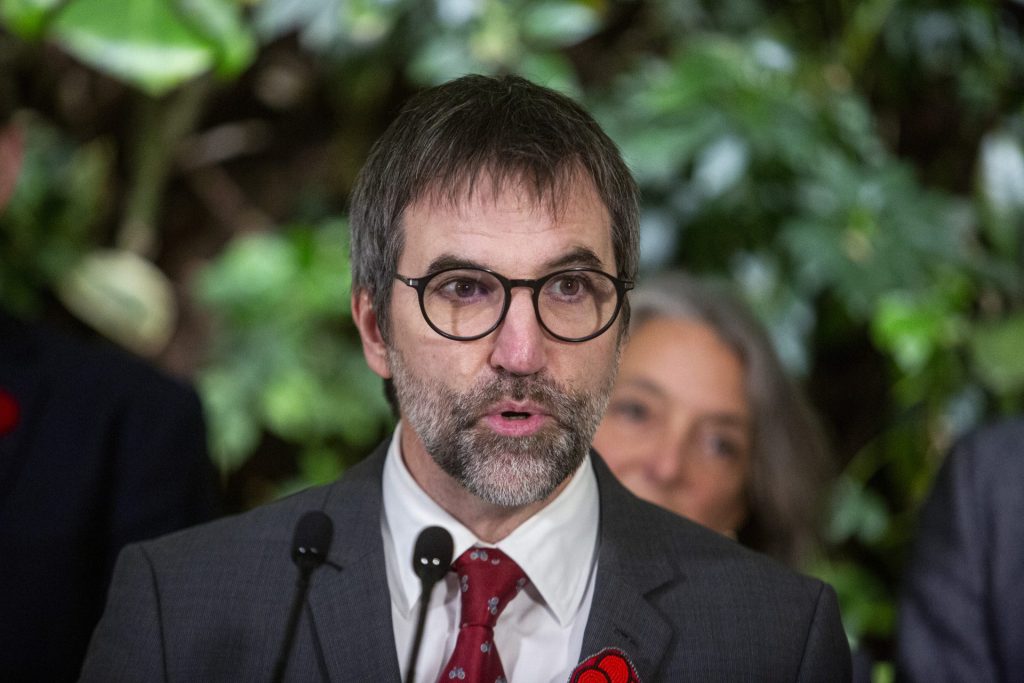
Carney pledges year-long benefit boost for seniors
Speaking of Team Trudeau policies, the Liberals also announced short-term goodies for seniors.
Specifically, to reduce the minimum amount that must be withdrawn from a Registered Retirement Income Fund by 25 per cent, and, to boost the Guaranteed Income Supplement by five per cent. The catch? Both policies would only be in place for one year.
The RRIF policy is, broadly speaking, targeted toward seniors who have money and don’t need it all yet. The GIS policy is for seniors who don’t have money, and need more of it.
Temporary relief policies like these were a staple of the later years of the Trudeau government, often announced by then-finance minister Chrystia Freeland. Their temporary nature helps to ensure that the government’s bottom line isn’t dragged down for the long run. It also presumes that whatever makes those policy changes necessary or attractive to voters will disappear in a year’s time. In this case, that would be “President Trump’s tariffs…rupturing the global economy,” according to the accompanying Liberal press release.
Poilievre promises ‘one stop shop’ resource approvals
Poilievre promised to “rapidly approve” 10 LNG, mining, port, and oil extraction projects currently under the environmental review process.
The Conservatives also pledged to create a “one stop shop” for future environmental reviews, which would, we are left to assume, be worked into his plan to repeal and replace the existing Impact Assessment Act.
Not only would this shop approve natural resource and infrastructure projects within one year or less, but it would also eliminate environmental reviews by provincial governments.
“A single office called the Rapid Resource Project Office will handle all regulatory approvals across all levels of government,” said an accompanying Conservative Party press release.
“We will cooperate with provincial governments to get all approvals into this single office,” it says.
Quebec’s government might have something to say about turning over the environmental assessment keys to a Poilievre-led federal government. So might the NDP governments of British Columbia and Manitoba, just to start.
April 5-6
Poilievre focuses on drug addictions
Poilievre promised to extend drug recovery programs and open up 50,000 new slots for Canadians who need to recover from addictions. He also said he would put a stop to federal funding for opioids and defund safe supply centres, with any remaining ones not allowed to operate within 500 metres of schools, daycares, playgrounds, parks and seniors’ homes.
Canada’s safer supply program has been among the most divisive policies in the country, with recent research claiming that British Columbia’s safer opioid supply and subsequent drug decriminalization led to higher cases of opioid hospitalizations.
However, the feds have claimed that the sites provide drug users—who are at the risk of overdosing on illegal substances—their prescribed medication in a safer set up. As per a Health Canada assessment between December 2020 and March 2021 of 10 safer supply pilot projects in B.C., Ontario, and New Brunswick, the policy had a positive overall impact on the participants, but some of the drug users were found trading their prescribed medication to someone else outside.
Singh offers national rent control
Singh continued his crusade against corporate landlords in Halifax, N.S., over the weekend and proposed that his party would implement a “national rent control.”
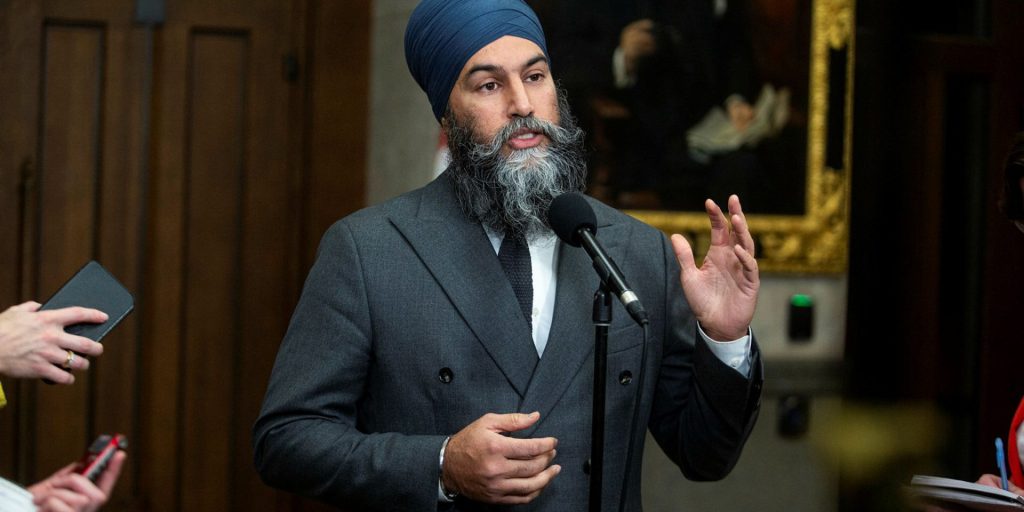
The party said in a press release that it will table a “renters’ bill of rights”, under which federal funding for housing will only be given to provinces and municipalities that put in place some form of rent control. It was not clear if this means that the local governments must put caps on rents—that is generally a factor of demand and supply.
The party further suggested that it will ban renovictions and price manipulations by corporate landlords, so people are not kicked out of their homes and the rents remain affordable.
A 2024 CBC analysis of data from Ontario’s rental housing tribunal showed that about 20 corporate landlords filed over half of 470 applications to raise rents above provincial guidelines for much of 2022. So, the NDP’s fight against this practice does have a valid base, but the details of how it will exactly implement these plans remain unclear.
Carney pitches funding for skilled trades training
Carney, meanwhile, directed his recent pitch towards the skilled trades. During a rally in Oakville, Ont., on April 5, he said that his government would cover costs of up to $8,000 for apprenticeship training, double the funding for union-led training programs, set aside $20-million in capital funding for colleges so they can get more training spaces for apprenticeships, and extend the Labour Mobility Tax deduction for workers who travel farther from home for work.
A shortage of workers in skilled trades has been a much-talked-about issue in Canada, with real impacts on the economy, as per a Canadian Federation of Independent Businesses report in 2022.
As per Statistics Canada, more than 245,100 construction workers are expected to retire by 2032 in Canada. A part of the shortage, between 2016 and 2021, was contained by employing non-permanent residents in the trades. Carney’s push for training in skilled trades could help better utilize the existing supply of workers, without necessarily resorting to more immigration to fill the labour gap. The challenge could, however, be making the skilled trades an attractive career option for more people.
April 3
Poilievre axes some more tax
Poilievre has found another tax to cut. This time he has proposed to waive the GST on the sale of new Canadian-made cars temporarily while President Donald Trump’s tariff on the auto sector remains in place.
This, the party claimed, will save Canadian car buyers some cash and help Canadian auto makers boost sales. Poilievre also appealed to the provinces to drop their taxes on such sales too, to bring down the prices for car buyers further.
While it could be an attractive offer, there are a few factors to consider here. For one, used cars may still be cheaper than the new ones, and people may still delay buying cars in an uncertain economic climate.
Poilievre additionally promised to create a “Keep Canadians Working Fund”, to ensure that— you guessed it right— Canadians keep working. A fund name so on the nose, it is almost inside it!
The idea is to give $3-billion in short term, low interest loans to businesses that are impacted by tariffs, so they can carry on operations and pay their workers.
The fund is designed after former Conservative prime minister Stephen Harper’s Business Credit Availability Program, which the former PM launched during the 2008 recession.
Singh resurrects war-time victory bonds
The NDP announced it would bring back a war-time scheme of issuing “victory bonds.” Canadians will have a choice to invest in these for five or 10 years to earn a compounding interest rate of 3.5 per cent, the party said in a statement.
No tax would apply on the interest income if the bonds are held until they mature. The money raised through the scheme would be used for “shovel ready” infrastructure projects like housing, roads, bridges and ports, as per the party.
Canada issued such bonds during both the World Wars to help Canada fight the battles, as per CBC. Singh placed the trade war with the U.S. on equal footing and said that through these bonds Canadians can “invest directly in the fight for our economy and our future.”
April 2
Singh promises ‘clean energy corridor’
The New Democrats released a significant chunk of their election platform on April 2. The party billed the release as its plan to “protect Canadian workers from Trump’s trade war.” The release included 18 different promises.
The plan includes promises slotted under six categories: improving Employment Insurance, making “strategic investments” in infrastructure, mitigating harm to households, cracking down on “corporate greed,” protecting public services from privatization, and roping off certain sectors from free trade.
Some of the promises are standard stuff for Canada’s left-most major party: for example, barring private health clinics, funnelling cash from retaliatory tariffs back to workers in trade-sensitive (and largely unionized) manufacturing industries, and expanding EI benefits.
A couple of others raise additional questions.
The NDP promised to “build an east-west clean energy grid with Canadian products to deliver affordable, secure energy while creating thousands of jobs.” This sounds sort of like the east-west energy/infrastructure “corridors” promised by the Liberals and Conservatives. It’s not clear what the New Democrats mean, exactly, by an “east-west clean energy grid,” or how it would fall under federal jurisdiction.
The NDP also promised to “cap grocery prices on essential items while cracking down on price gouging by corporate giants.” There’s a reason that governments don’t go around capping prices on things in developed economies: it’s a recipe for shortages.
Liberals pledge goodies for farmers
The Liberals, meanwhile, focused on the agriculture sector. They included a pledge to maintain Canada’s protections for the supply management system for dairy, poultry, and eggs.
The Liberals also promised to double the AgriStability insurance program, pour $200-million into food processing businesses, and add millions more to programs designed to subsidize the purchase of eco-friendly farm equipment, and more.
April 1
Poilievre backs oil wish list, beer tax cut
The Conservatives promised to cut the automatic annual increases to taxation on alcoholic drinks that were legislated by the Liberal government in 2017.
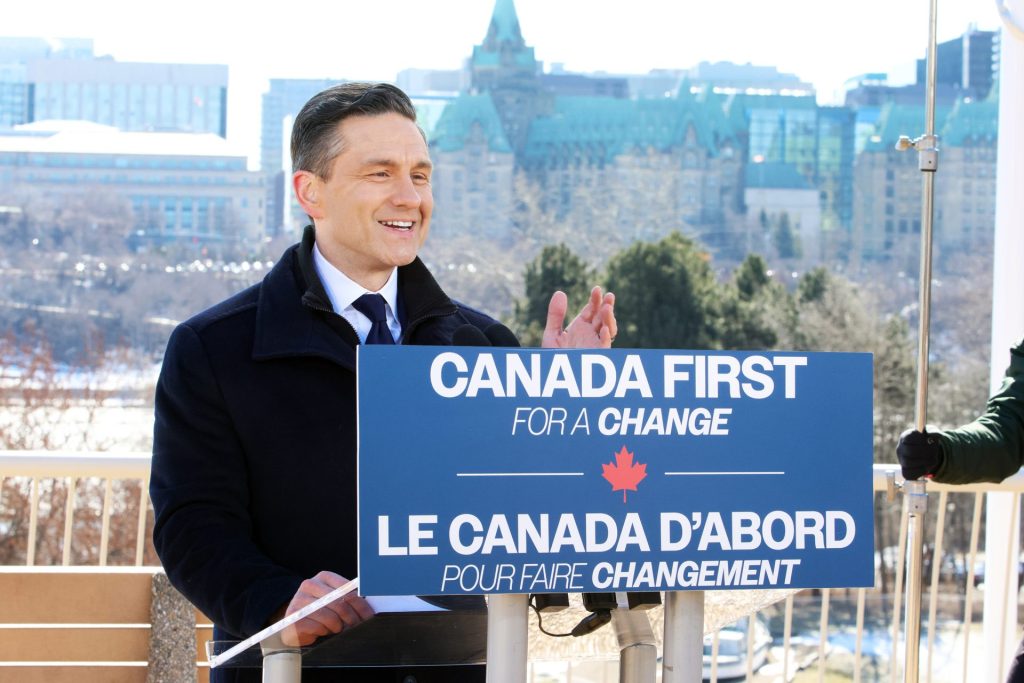
Poilievre’s party also committed to “meeting all of the policy recommendations from Canada’s energy sector,” as part of his bid to “end dependence on the U.S. market and unleash Canada’s economy.”
That includes:
- Repealing the environmental impact assessment law brought in by the Trudeau government.
- Eliminating the ban on oil tanker traffic along part of the West Coast.
- Eliminating the cap on oil and gas sector greenhouse gas emissions.
- Eliminating the industrial carbon tax.
- Setting a target of six months time or less to approve applications for resource projects.
- Establishing a Canadian Indigenous Opportunities Corporation to offer loan guarantees to Indigenous communities.
March 31
Liberals release housing plan, Tories want pipeline corridor
The Carney campaign released its housing platform, billing it as the “most ambitious housing plan since the Second World War.” Ambition is not a predictor of success, of course, but perhaps we could use a little more of it where housing is concerned. Let’s take a look at some of the promises within the platform.
One: to create a new government entity called, Build Canada Homes, or BCH for short.
BCH will have three jobs: to build “affordable housing at scale,” to “catalyz[e]” a “new housing industry,” and to provide financing to “affordable homebuilders.”
“Affordable” is not defined. “Affordable” is also not something that can be physically built. A builder can construct homes that are likely to sell for less than the average unit—smaller ones, for example. A government could try to fix the price of homes at below-market rates, though that doesn’t seem to be part of this plan. It is also possible that prices for homes could decline across the board—making them more affordable—if loads of new homes are built, and the demand for homes is curtailed.
The BCH will provide $10-billion in “low-cost financing and capital” to those “affordable home builders.” The money will be earmarked for parts of the market most in need, including shelters and “deeply affordable” housing.
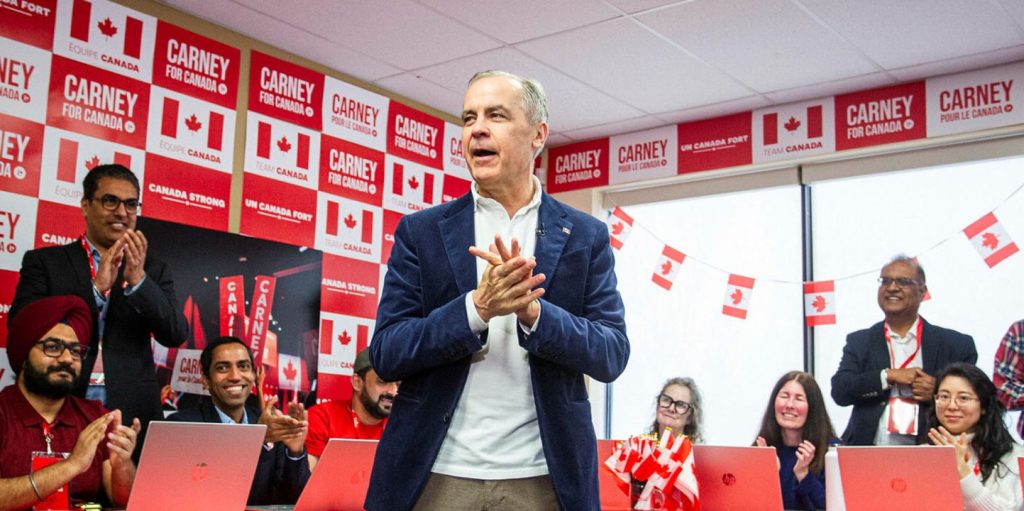
The platform includes a pledge here to “immediately develop homelessness reduction targets.” It’s a laudable goal, but the “immediately” part should give a beat of pause. Measuring homelessness in the first place is actually quite difficult.
There’s more. BCH will pony up $25-billion in debt financing and $1-billion in equity financing to aid the construction of “innovative Canadian prefabricated home builders,” which we’re told will reduce construction time and costs.
The Carney government would also get its hands dirty, so to speak, by acting as a developer, partnering with builders to get projects going. This will sound great if you’re the kind of person who is fed up with all-talk, no-action housing plans. Less so if you’re worried that the government will not immediately master the complexities of acting as a housing developer.
We also get a line about the government transferring its Affordable Housing Fund and other programming to BCH from the Canada Mortgage and Housing Corporation. We could use some more detail there: the CMHC purports to serve the same purpose, in a general sense, as the new bureaucracy that Carney plans to stand up and staff. If we are two have two bureaucracies rather than one devoted to housing, it would be nice to know exactly why we need both.
There’s a lot more in the plan. One more point worth highlighting: Carney is planning to “cut municipal development charges in half for multi-unit residential housing, and work with provinces and territories to make up the lost revenue for municipalities for a period of five years.”
Municipal development charges are a tax that developers must pay for every new unit they construct. The rationale is to cover the cost of the extra infrastructure that the municipality must build in order to service those new homes once they are occupied, but cities and towns have steeply ramped up these fees in recent years to save themselves from increasing property taxes, to the chagrin of housing policy wonks everywhere.
The federal government cannot order municipalities to cut development fees. It might be able to incentivize them to do so with cash, as Carney’s plan suggests—though the five-year time limit might prove too short to get all the homebuilding done before the cash transfers end, and development fees go back up.
Poilievre promises ‘national energy corridor’
Poilievre released another policy proposal, and it is a masterclass in political mischief.
Poilievre pledged to create a “national energy corridor” across the country. The corridor, we’re told, will involve “all levels of government” making “legally binding commitments” to quickly approve any pipelines, railways, transmission lines, or other “critical infrastructure” projects proposed within the corridor.
The corridor, said the Conservatives, would make it easier to transport resources within Canada and to international markets besides the United States.

The Conservatives’ press release included all of the usual boilerplate about the Trudeau Liberals cancelling pipelines, but no mention of the Trans Mountain Pipeline, which is now shipping loads of oil to international markets. More on that below.
The first cautionary note must be attached to the phrase “legally binding.” In the world of government, that word is less meaningful than one may imagine. Governments ignore, manipulate, or contravene laws on a regular basis. You can sue them, and write news stories about their intransigence, but politics, rather than law, will ultimately determine their actions.
The second and much larger cautionary note must be affixed to the notion that a Conservative federal government would be able to convince all of the provinces, municipalities, and First Nations along any cross-country pathway to give a blank cheque for pipelines and other infrastructure projects. If B.C. doesn’t say no, you can be darn sure that Quebec will.
Blanchet has been busy ruling out pipelines of any sort crossing through Quebec territory this whole campaign. Of course, he doesn’t run the Quebec government, but he does speak for a decent chunk of Québecers on this issue.
As it happens, the Conservatives would probably prefer the Bloc to speak for a bigger chunk of Quebec voters at the moment, if it means siphoning support away from the Liberal Party, which is on track to clean up in the province on April 28. Turning this into an election over pipelines—if only in Quebec—may well help them to do that.
March 28-30
Poilievre proposes a new tax cut
On March 30, Poilievre announced a proposal for a “reinvestment tax cut,” under which no capital gains tax would be applied on the sale of assets if the proceeds were reinvested in Canada.
The tax break, the Conservatives said, would be applied to any reinvestments made from July 2025 to the end of 2026.
There are a few things to unpack here. Currently, half of the capital gains earned either by corporations or individuals are considered taxable income, to which the regular corporate or personal income tax rates apply.
Depending on their income level, a person or a company may end up paying more or less tax on such gains. So, tax paid on capital gains is relative to the amount of taxable income, and there is no standard capital gains tax rate.
Poilievre claimed that “high capital gains tax” discourages people from selling their assets, and then investing in other businesses.
It is unclear what categories of “reinvestment” would be deemed as eligible under the scheme. It was also not immediately clear how provincial taxation regimes would be affected by the policy.
Singh offers a crackdown on corporate landlords
Singh said on March 28 that he would ban corporate landlords from buying existing affordable housing rental buildings and stop providing them perks like low interest federal loans and mortgage loan insurance. He also pledged to increase the Rental Protection Fund.
It is not clear who, realistically, would be able to purchase those rental buildings under that scenario, or what the consequences would be of blocking their sale en masse.
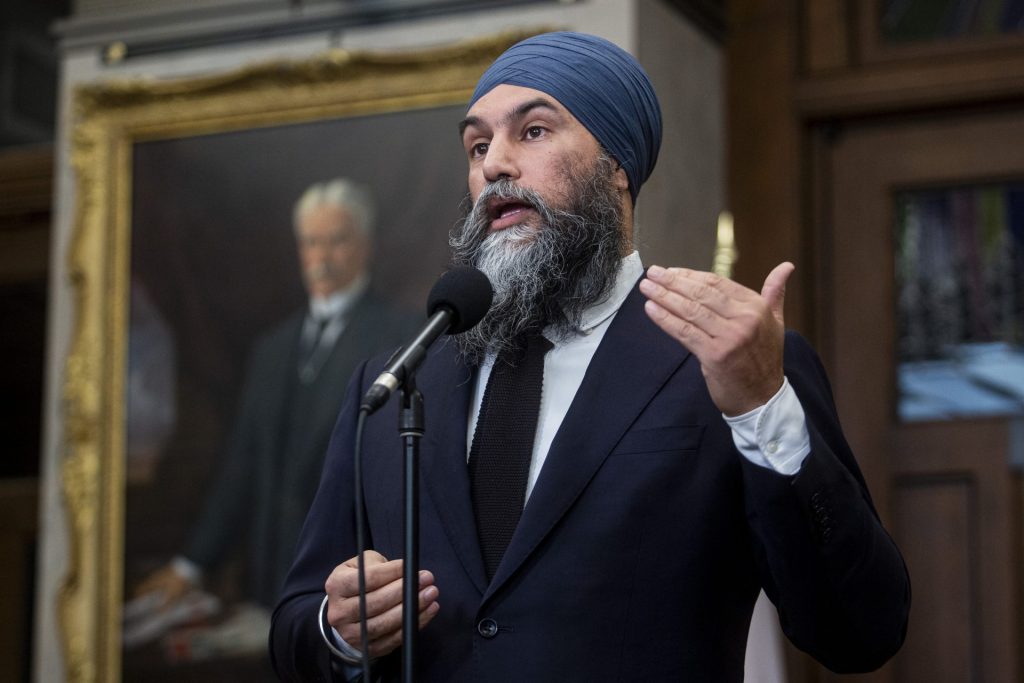
Carney pitches a new fund for diversifying trade
Carney laid out some of his new plans in Montreal on March 28, too. He proposed creating a new $5-billion “Trade Diversification Corridor Fund”, which he said will be used to build new infrastructure like ports, rail roads and airports to help Canada sell more goods to other countries apart from the U.S.
The government has run a similar program for several years already. Carney’s announcement claimed that the public infrastructure cash could “leverage” twice that amount from the private sector—a claim that was made often, but seldom realized, by the Trudeau government when announcing big pots of cash.
March 27
Poilievre pitcheS higher TFSA limit
Poilievre declared that his government would raise the limit on annual contributions towards Tax-Free Savings Accounts by $5,000. The TFSA limit for 2025 stands at $7,000. The account allows people to deposit their savings or investments into so that any income earned on them is tax free.
Poilievre said this policy would increase investments in Canadian businesses, which will in turn create jobs.
Singh laYS out plans to defend the auto sector
Speaking of jobs, the Singh set out his four-point plan to protect Canada’s auto sector from the impact of Trump’s tariffs while on a visit to Windsor, Ont.
He pledged to: use every dollar earned from counter-tariffs to support workers, boost employment insurance, bar auto companies from moving their assets purchased with the Canadian government’s funding out of the country, and mandate government agencies— including the RCMP and Canada Post—to buy Canadian vehicles.
March 26
Carney promises all-Canadian auto sector
Carney announced a Liberal government would, if re-elected, “support,” “protect,” and “grow” Canada’s auto manufacturing sector as it stares down an existential threat from Trump.
His pledge for government support starts with a $2-billion “strategic response fund” for the auto sector. But the Liberals went further, promising to “build an all-in-Canada auto manufacturing network.”
That’s a different sort of proposal: rather than a temporary and limited rescue fund, it seems the Liberals are contemplating a permanent subsidy for the industry—using government cash, in one form or another, to pad the bottom line of auto manufacturers until it makes sense for them to keep building cars in Canada, tariffs or not.
That would be good news for Canadian auto workers, who no doubt want to keep their jobs. It is arguably less good for Canadian taxpayers who don’t get any benefit from subsidizing automakers.
Conservatives court seniors
Poilievre’s made a pitch for the senior vote—the demographic that has been most staunchly Liberal-leaning through the polling ups and downs of the past two years. The Conservatives promised to make two changes to reward seniors for delaying retirement.
First, they would push back the age at which a person must cash in their RRSP, from age 71 to 73. Second, they would increase the basic personal amount—the income on which individuals are exempt from paying tax—for working seniors from roughly $15,000 to about $25,000.
Keeping your cash away from the government: it’s classic conservative policy, so fair enough. But the Conservatives weren’t the only ones to seize on the basic personal amount, or BPA, on March 26.
NDP, Greens promise tax breaks
The New Democrats also announced a plan to raise the BPA, and for everyone, not just seniors. They said they would increase it to $19,500. The PBO’s Ready Reckoner tool tells us that boosting the BPA to $18,000—the highest increase the tool will allow—would cost about $7.9-billion, for context.
The New Democrats also promised to permanently remove the federal sales tax from items including “grocery store meals, diapers, and strollers” as well as internet, cell phone, and home heating bills.
They pledged to go ahead with the Trudeau-era increase to the capital gains tax—the party estimated that it would bring in $17.4-billion in revenue—to double the Canada Disability Benefit, and to raise—by an unspecified amount—the Guaranteed Income Supplement.
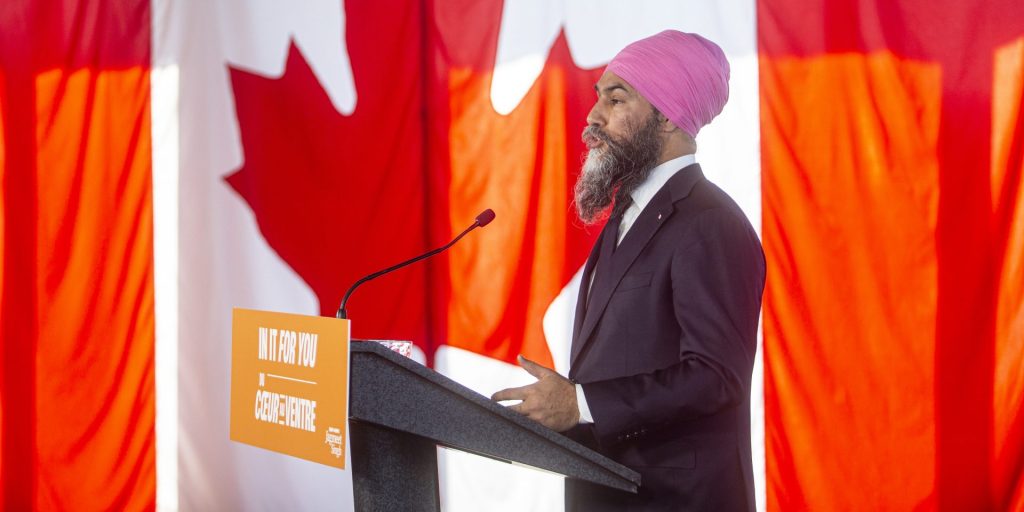
The Canada Disability Benefit currently amounts to up to $200 per month in support for those who qualify.
The Disability Benefit and Guaranteed Income Supplement are benefits targeted to those in need, and as such, increasing them should give taxpayers good bang for their buck. Taking the sales tax off of the aforementioned items, not so much: rich people buy strollers and internet, too.
Not to be overlooked, the Green Party released its tax plan, and that included a proposal to increase the BPA all the way up to $40,000. The party estimated that the tax cut would cost $47-billion.
Economist Kevin Milligan wasn’t impressed with the NDP package. The University of British Columbia professor posted on social media in response:
“Let me note that the NDP-proposed GST cut sends more dollars to ‘millionaires and billionaires’ than middle-class Canadians. Let me further note that the BPA increase doesn’t benefit the 31 per cent of low-income tax filers who have non-taxable returns. I get it—tax policy is hard. So maybe preen less?”
Milligan told The Hill Times that his issue with the BPA increase was that it wouldn’t help the poorest Canadians, who don’t earn enough to pay any taxes to begin with, and thus won’t benefit from a tax break.
He compared that benefit to the GST credit, a program through which the government automatically sends quarterly payments to low-income households that have filed taxes.
He also wondered where the Green Party would find $47-billion to pay for its tax cut.
Milligan’s big-picture takeaway, however, was disappointment that all of the parties seem determined to spend away the government’s bottom line on tax breaks, rather than using it to confront the security and economic challenges that the Trump presidency will impose. He called it a “profound” misdirection of priorities.
To be fair, Carney’s team could argue that their announcement yesterday was all about tackling the Trump threat. The Liberals have already proposed a multi-billion dollar tax cut, however.
March 25
Poilievre backs oil wish list
Carney announced the outlines of a defence platform, promising to:
- Buy new submarines and icebreakers, as already planned by the government. (He didn’t say how many or at what cost.)
- Not cancel existing orders for combat and patrol ships for the Navy.
- “Work with all of Canada’s shipyards to ensure that we are maximizing their capabilities and using Canadian steel and aluminum.” (It’s not clear if “work with” means more subsidies, or something else.) Carney also later posted on social media that “if it’s built by Canadian workers on Canadian docks, it should be made with Canadian steel and aluminum.”
- Give a new mandate to the Coast Guard, expanding its role in security and surveillance.
- Giving a raise (he didn’t say how big) to Canadian Armed Forces members, and improve access to housing, health care, and child care on military bases.
- Create a “defence capital account” to, essentially, make it easier to spend money allocated for defence procurement.
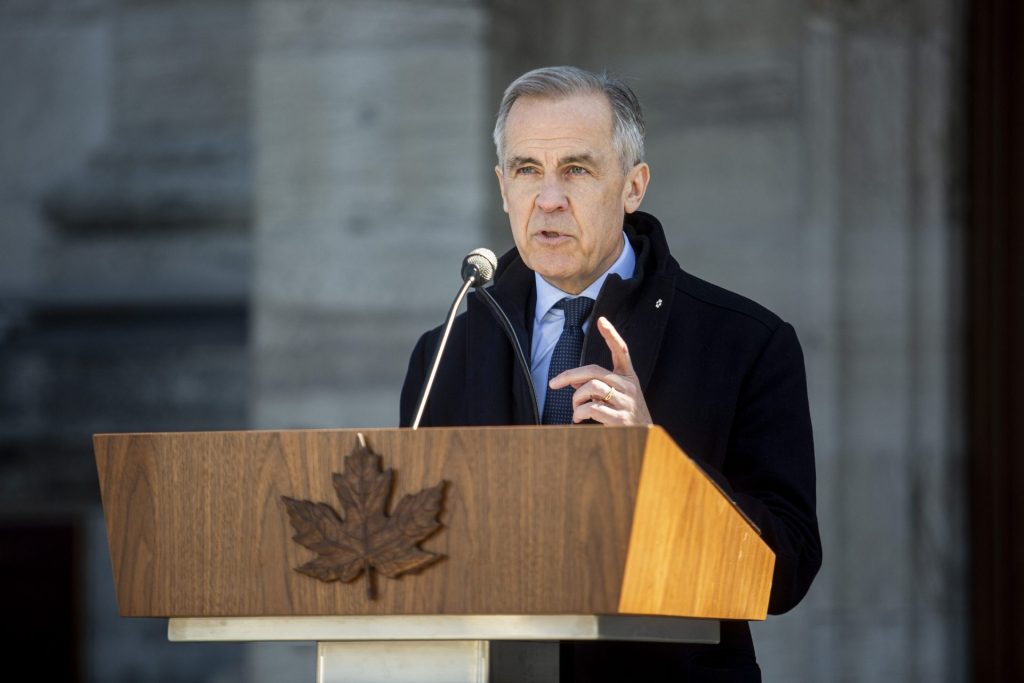
- Deliver an “unprecedented acceleration of investment in our Armed Forces” (he didn’t say how much).
- “Modernize” Canada’s procurement-related legislation to help the CAF buy equipment faster (he didn’t say how).
- Buy “dual purpose infrastructure” that benefits both the military and the public—hew cited housing, cybersecurity, and satellite technology as examples.
- Create a military drone-building industry.
Poilievre announced that he would remove the federal sales tax on the sale of all homes selling for less than $1.3-million. This was an expansion of an earlier, pre-campaign promise to take the sales tax off of new homes worth less than $1-million.
Mike Moffatt, an economist with a focus on housing policy, reacted to the announcement on social media. He said the higher price threshold would “make it possible” for the rebate to apply in the metro Toronto and Vancouver areas, where prices are often above $1-million. He also wrote that it’s “not a great use of public money” to take the tax off of the purchase of homes that are not a primary residence—using the example of someone building a cottage for themselves, tax free.
The Conservatives also pledged to scrap the $50 toll charged for those leaving Prince Edward Island via the Confederation Bridge.
Blanchet, meanwhile, issued a press release promising to oppose any west-to-east oil pipeline running through Quebec.
March 24
Duelling Liberal-Conservative tax cuts
The Liberals and Conservatives have both promised tax cuts to begin their campaign.
The Carney Liberals promised to reduce the tax rate for the bottom tax bracket from 15 per cent to 14 per cent.
That tax rate applies to the first $57,375 earned by a Canadian resident. A reduction of one percentage point, absent any other tax implications, would reduce the tax bill of a person who earns at least that much by $573.75 this year. The Liberal Party estimated that the actual reduction would come to $412 per person.
The move would cost the government about $5.9-billion in lost revenue, according to the Parliamentary Budget Officer’s Ready Reckoner estimation tool.
Poilievre went even further, promising to reduce the same tax rate from 15 per cent to 12.75 per cent—a decrease of 2.25 per cent.
The Conservative Party has framed the cut as a promise to “cut income tax by 15 per cent”. That is true only for individuals who earn no more than the limit of the bottom tax bracket: $57,375 this year. (A cut of 2.25 to a rate of 15 is a reduction of 15 per cent). For those who earn more, the tax cut is smaller than 15 per cent.
The Conservative tax cut would shave $1,290.94 off the bill for an individual earning exactly the limit of the bottom tax bracket, absent any other tax implications. The party estimated that the real impact of its cut would be $900 per year for an individual earning $57,000 annually, just shy of the top of the bottom tax bracket.
The PBO’s Ready Reckoner tool doesn’t allow for an estimate of such a significant cut to that particular tax rate, but it does show that cutting the rate to 13 per cent would cost $12-billion to the government’s bottom line. The additional 0.25 cut would probably add at least another billion to that total.
March 23
CAMPAIGNS KICK OFF
Carney wasted no time on March 23 in setting out his priorities while announcing the date of the election at Rideau Hall. Those include standing up to Trump and his trade war as the top focus, and getting the Canadian economy back on track. He momentarily echoed his opponent, Poilievre, in remarking that life has been more expensive in recent years.
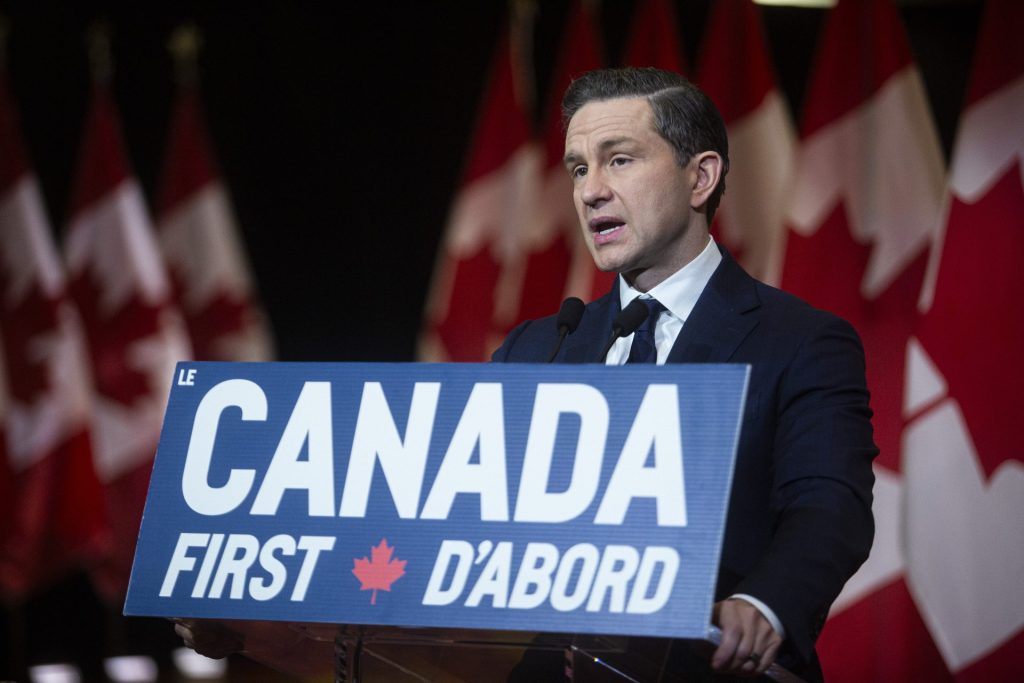
“It’s easy to be negative about everything if you’ve never fixed anything,” Carney said, taking a shot at Poilievre. Carney pitched himself as the best man for the job of fixing things in the country, and claimed he has the expertise to do it. To start, he promised to give a one per cent tax cut to Canadians in the lowest tax bracket.
In his own campaign launch, Poilievre said that “a Liberal is a Liberal is a Liberal,” and blamed Carney and the party he leads for having broken everything.
The NDP’s Singh kickstarted his bid to be the prime minister by framing himself as the leader of the working class—someone who is not in it for the billionaires. The Greens proposed taxing the rich and bringing “Canada to Ottawa.” Pedneault recounted his experience of having witnessed the war zones in Ukraine, Libya, and elsewhere, and seeing what “collapse looks like.”
The Hill Times





 LICENSING
LICENSING PODCAST
PODCAST ALERTS
ALERTS